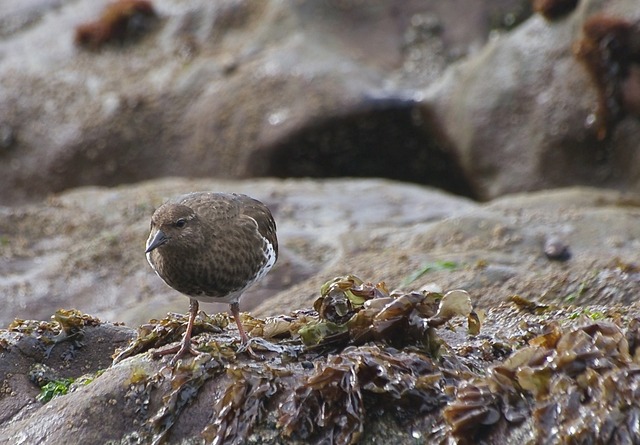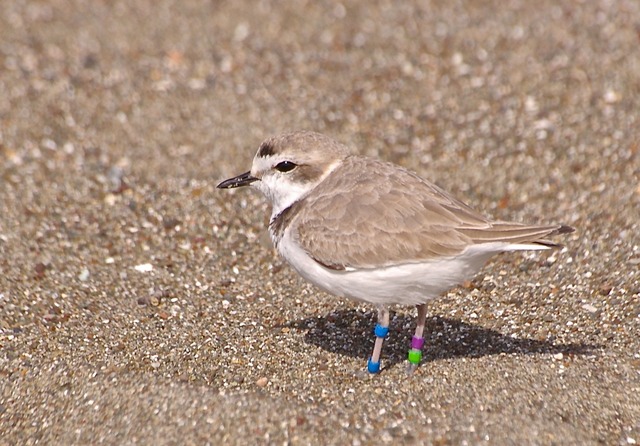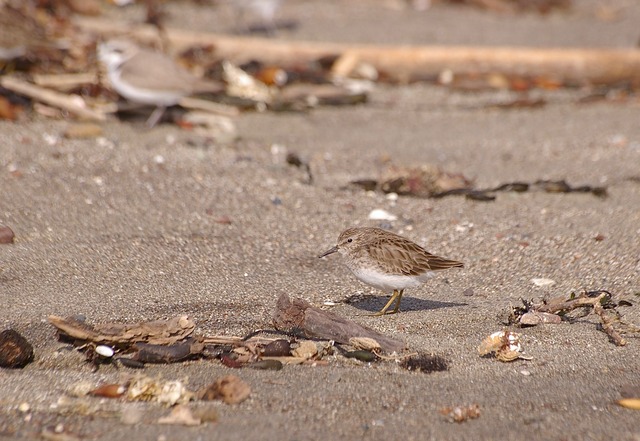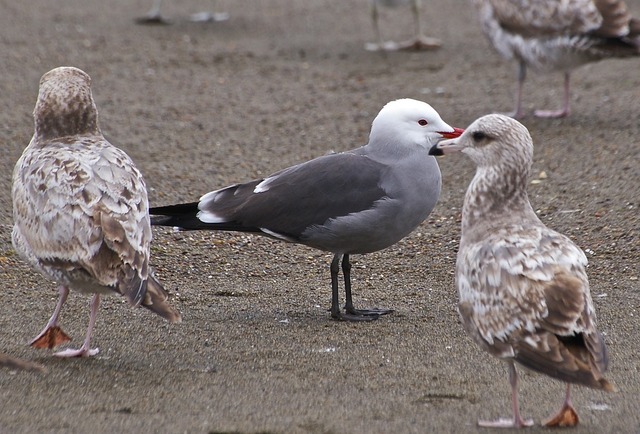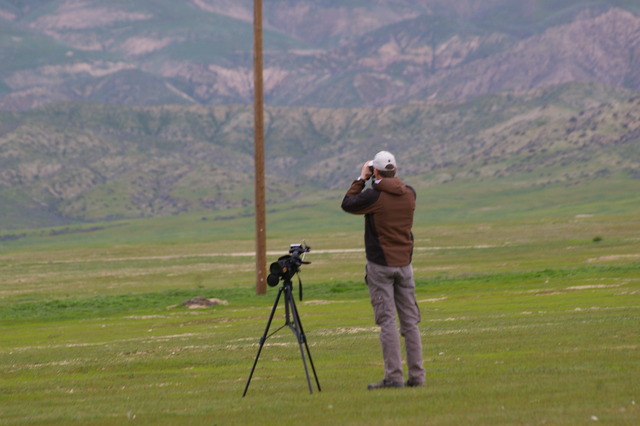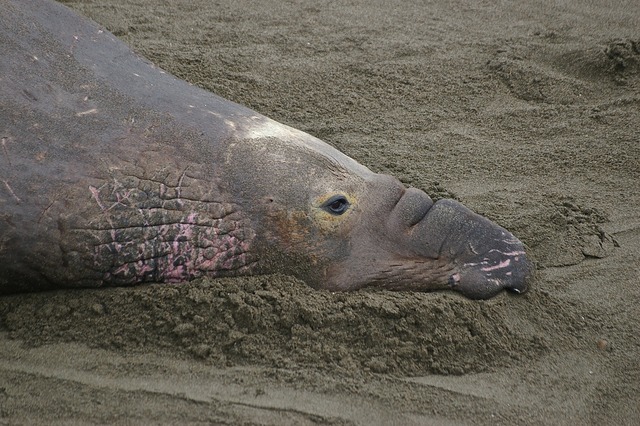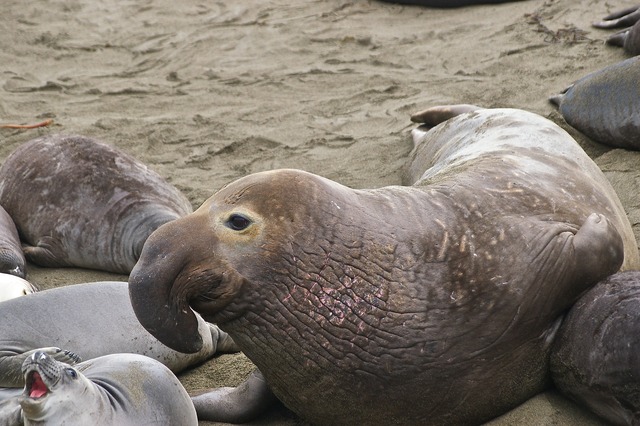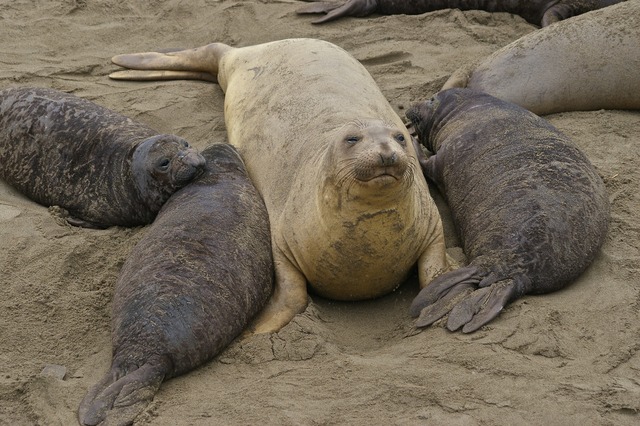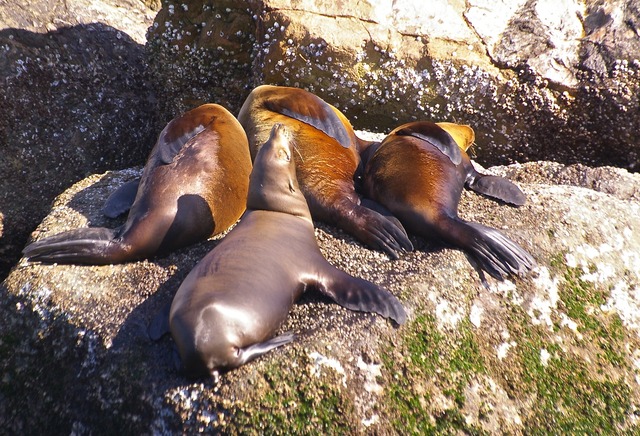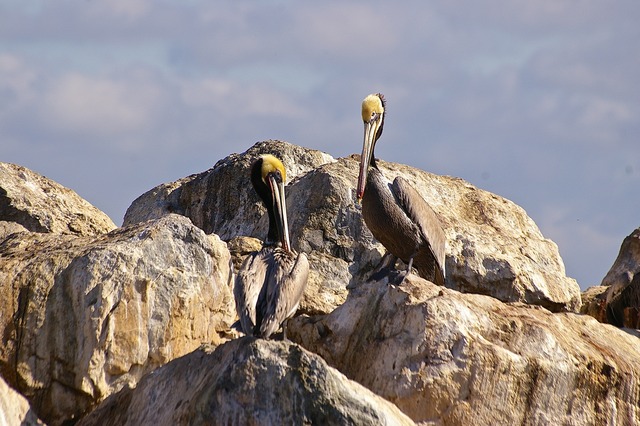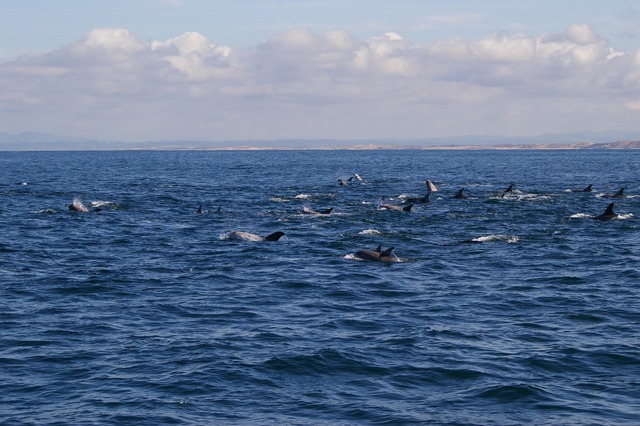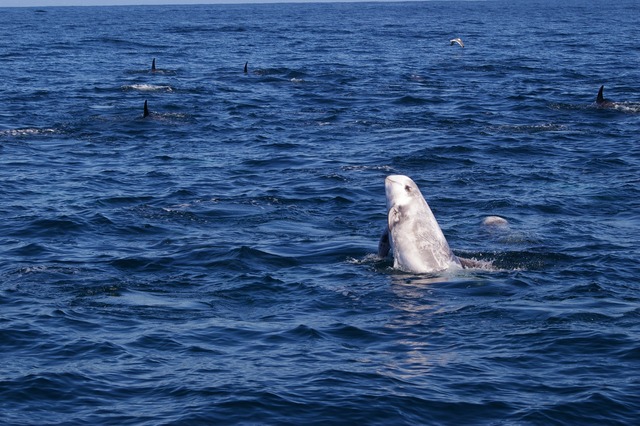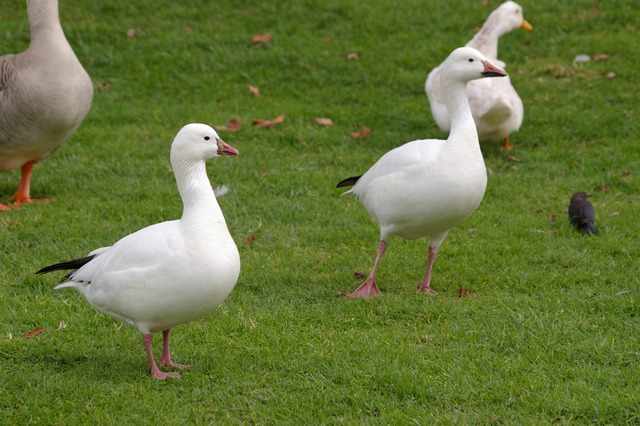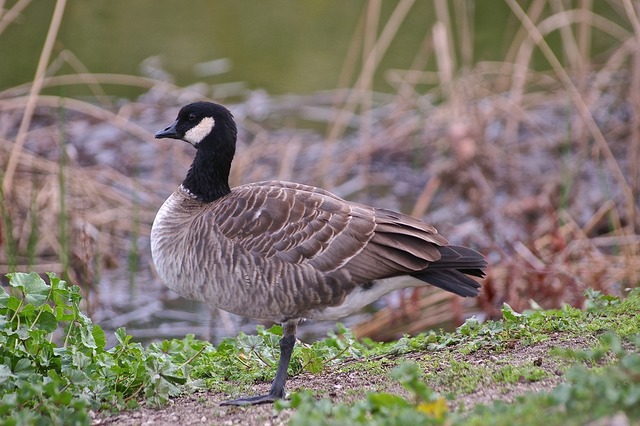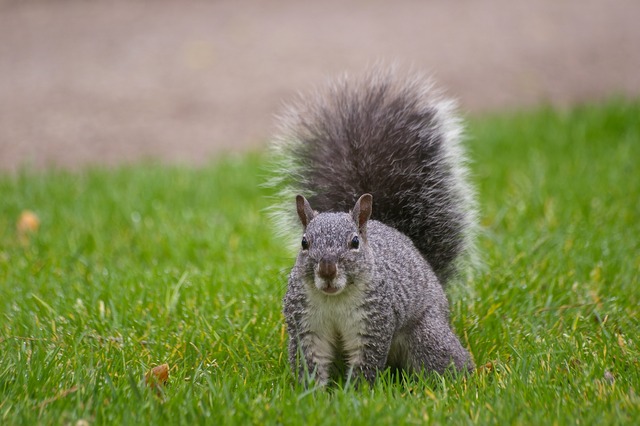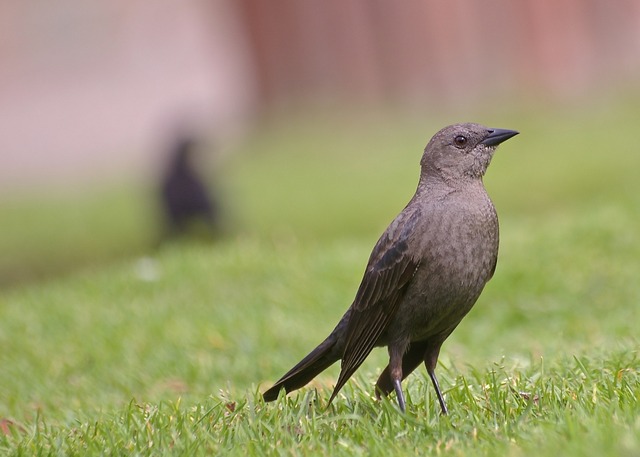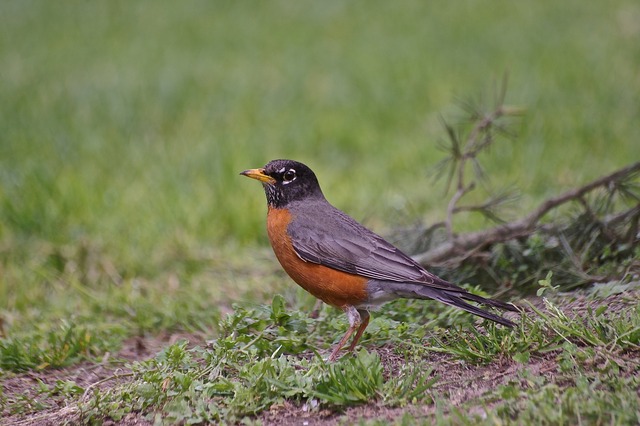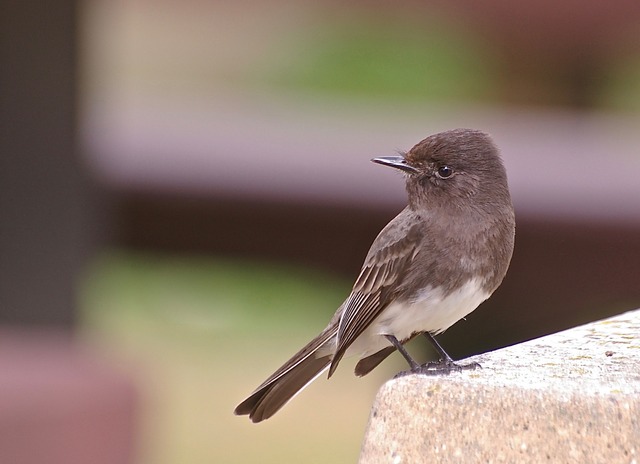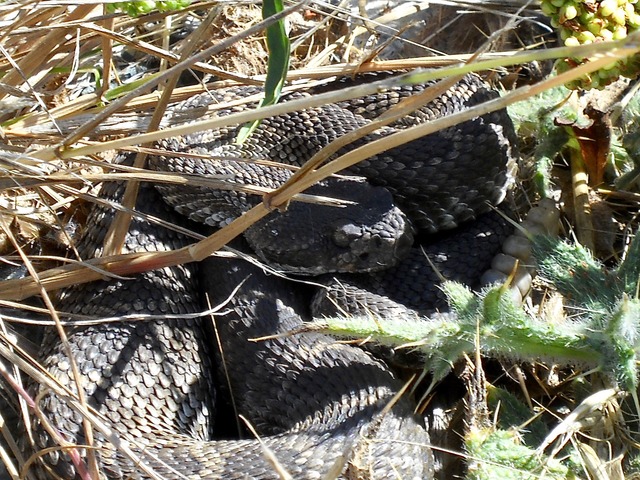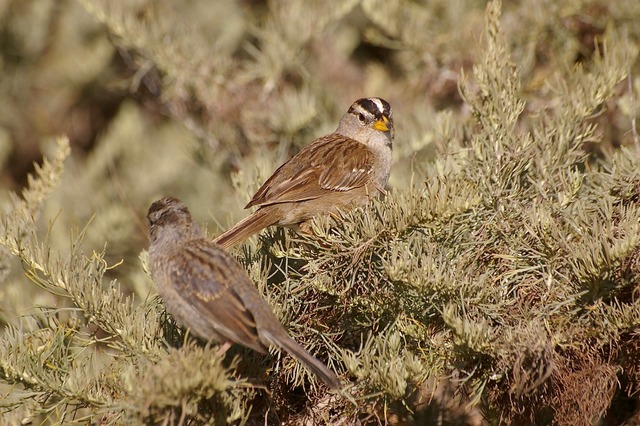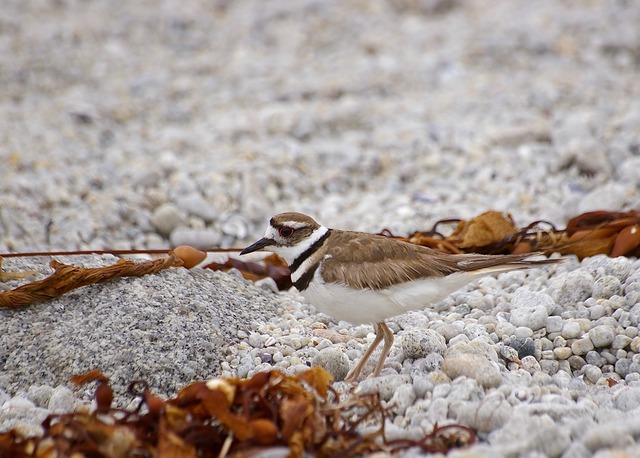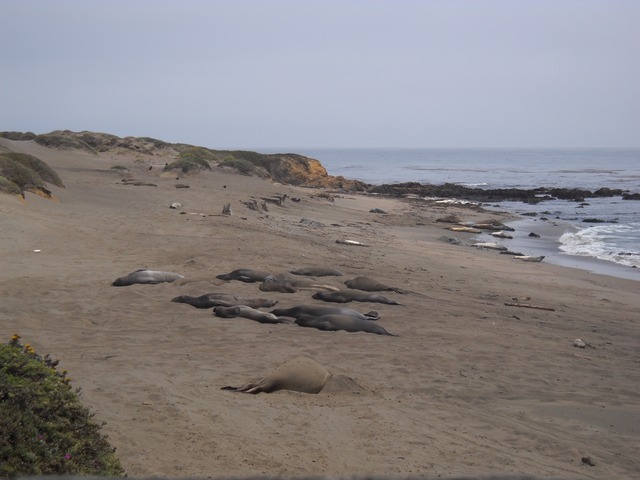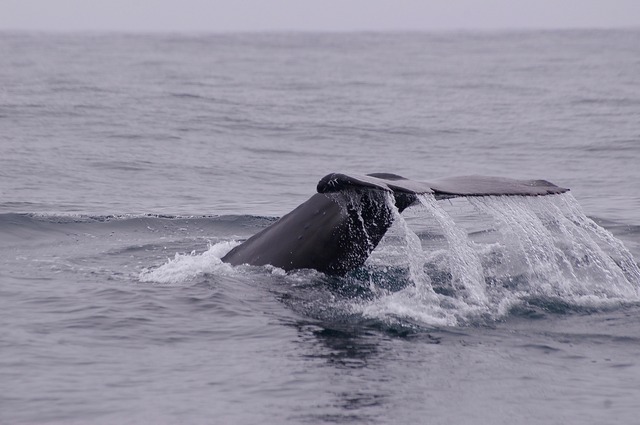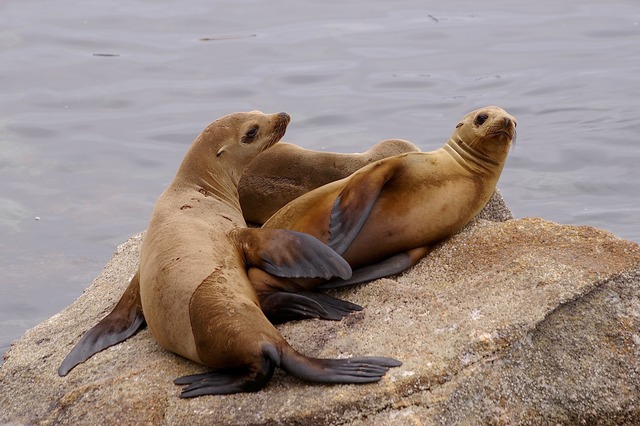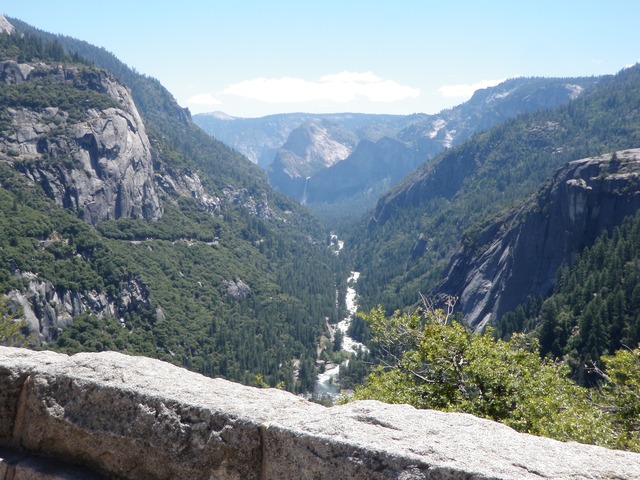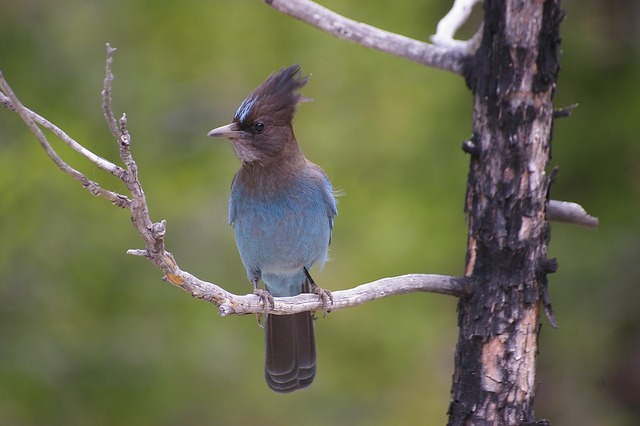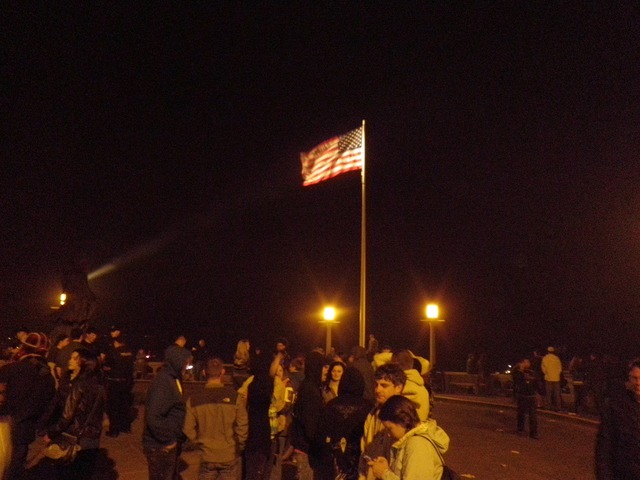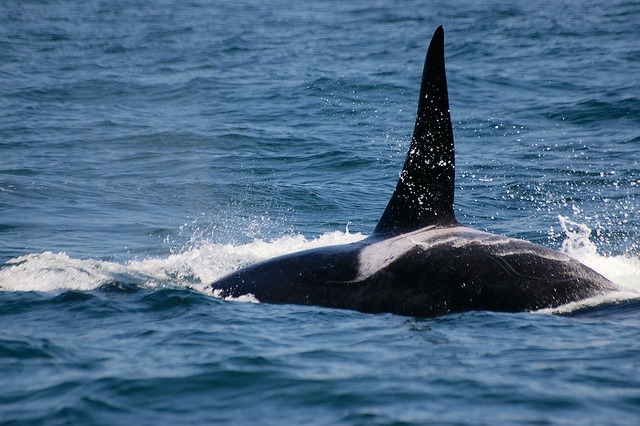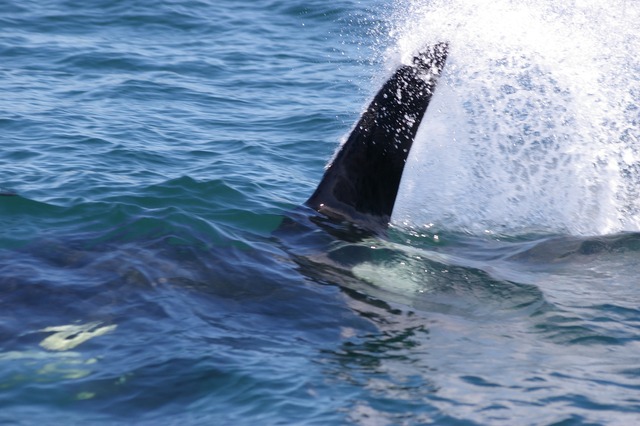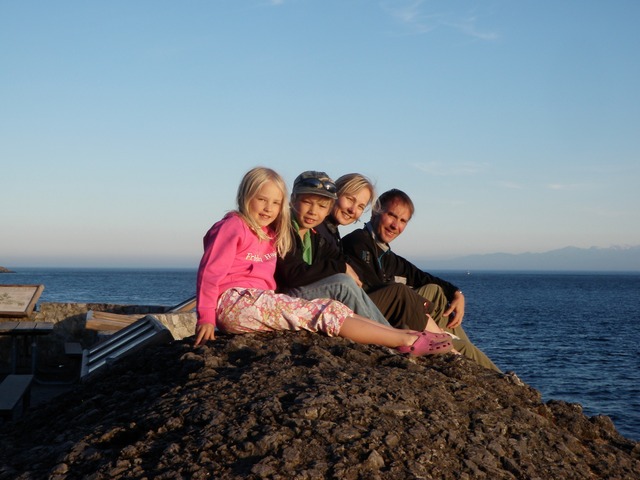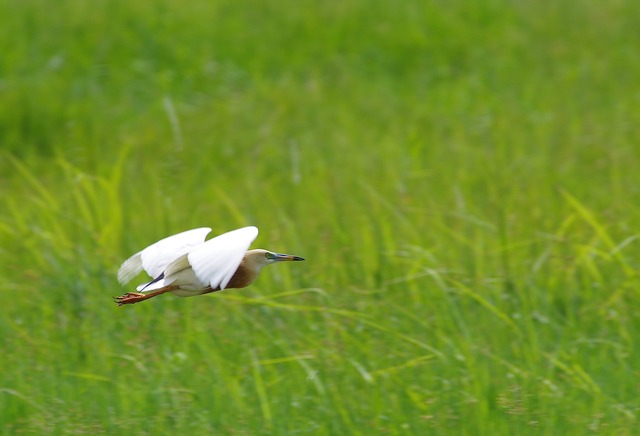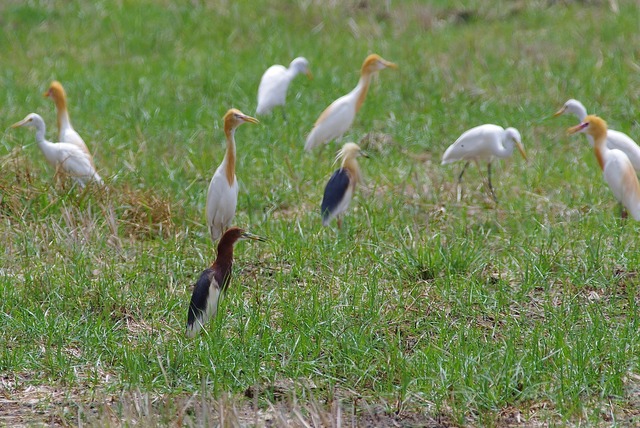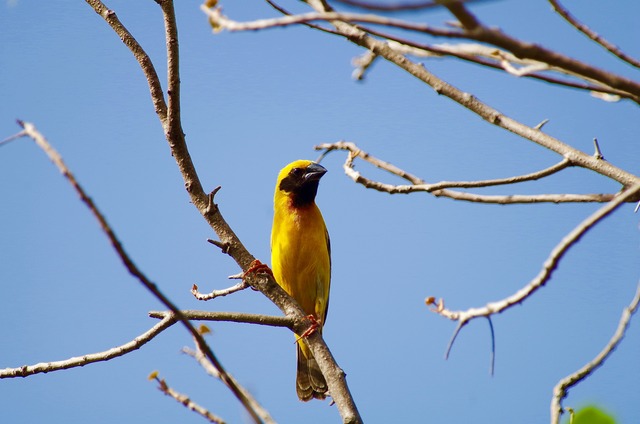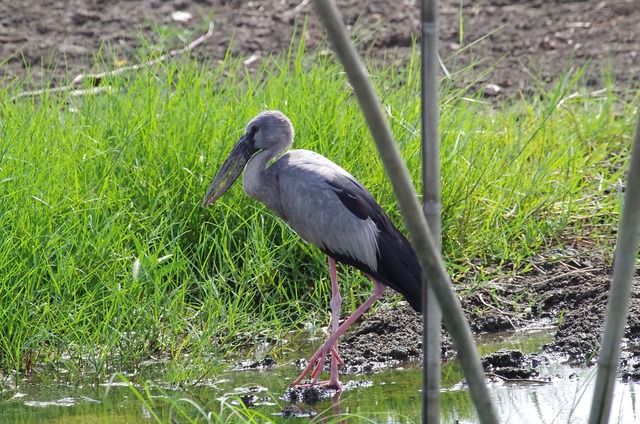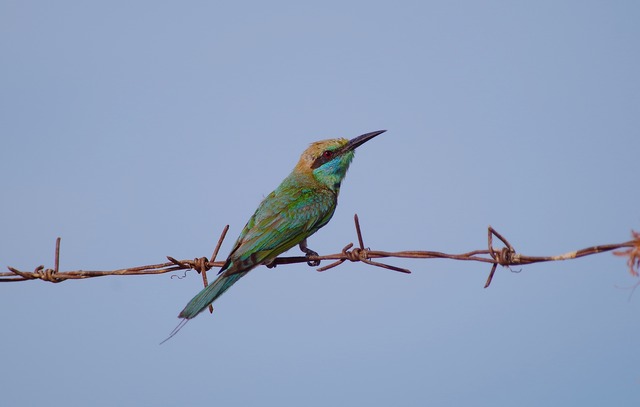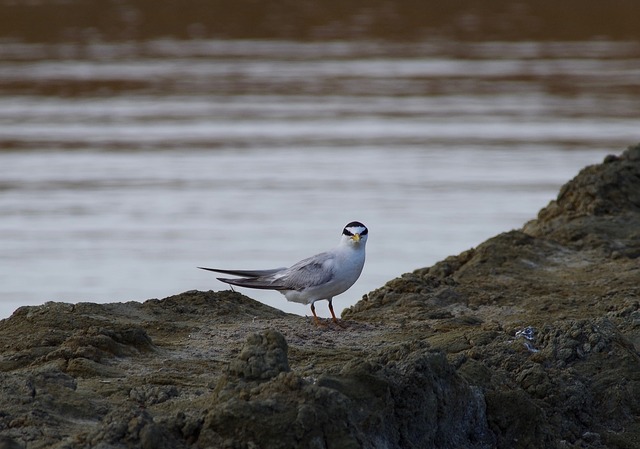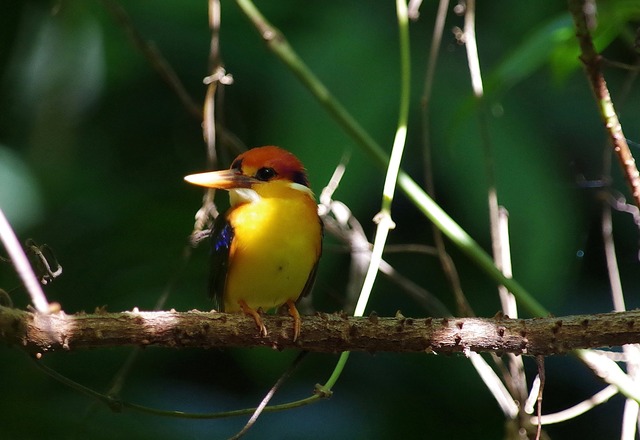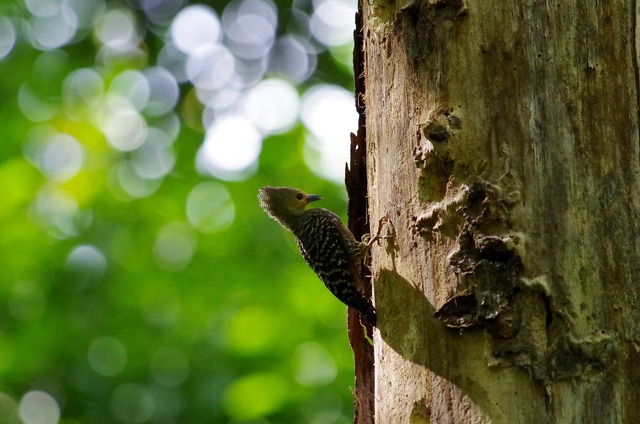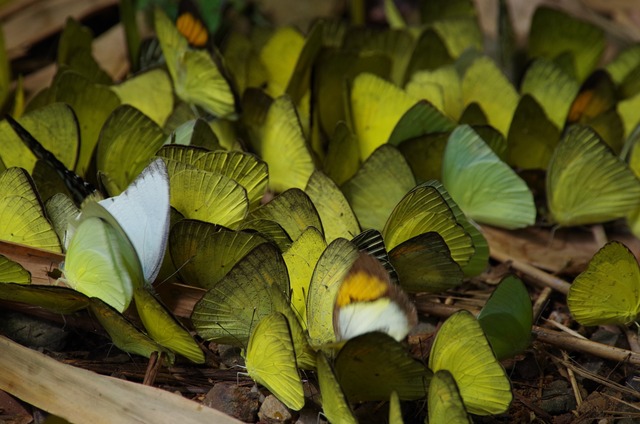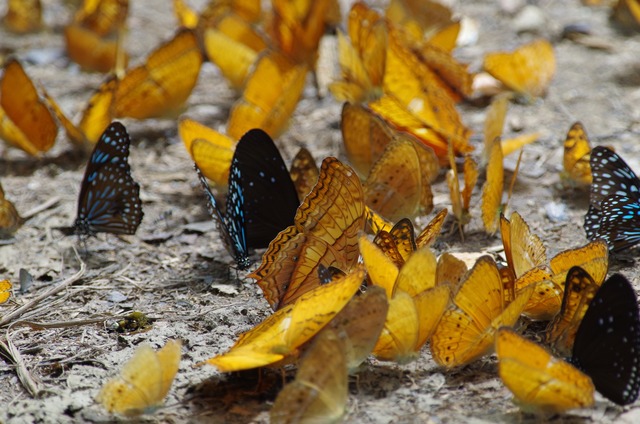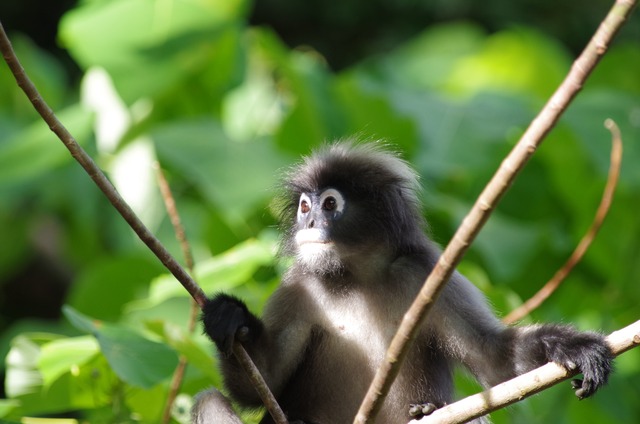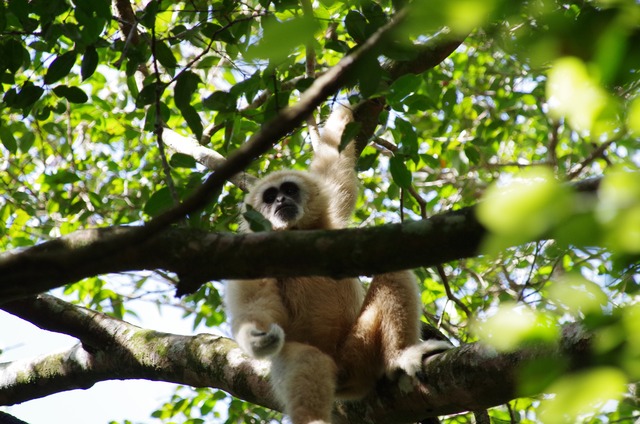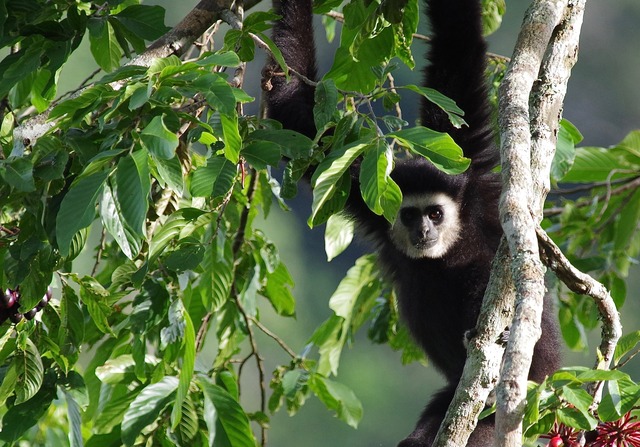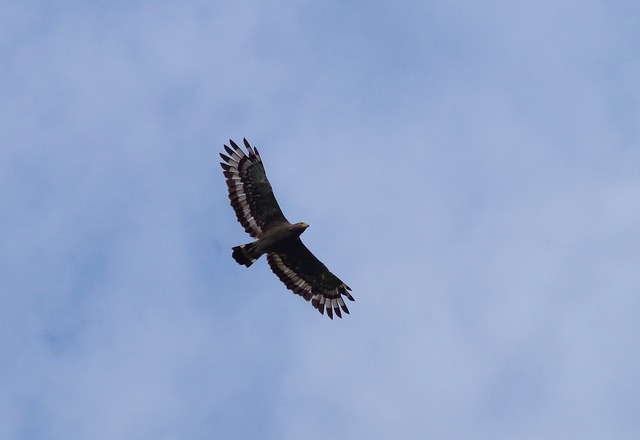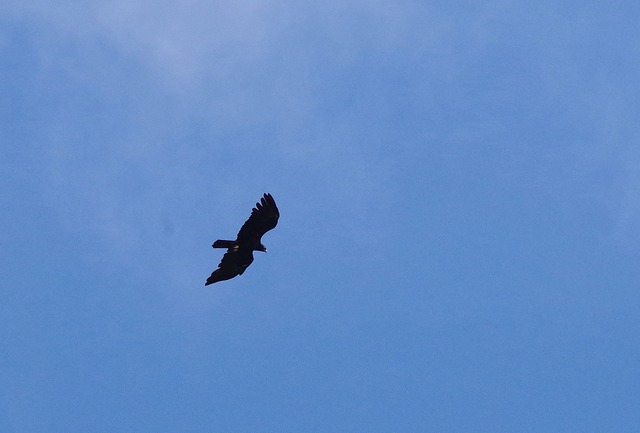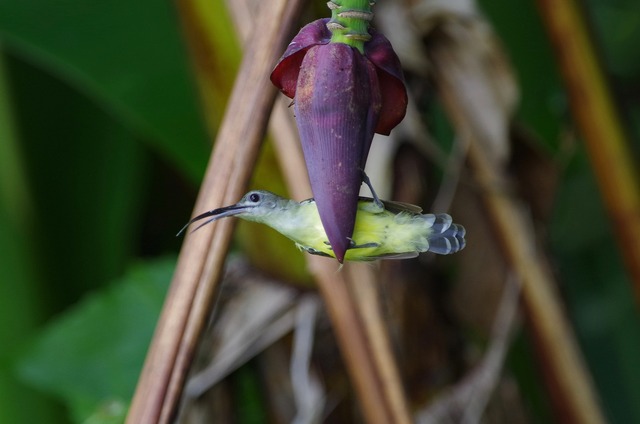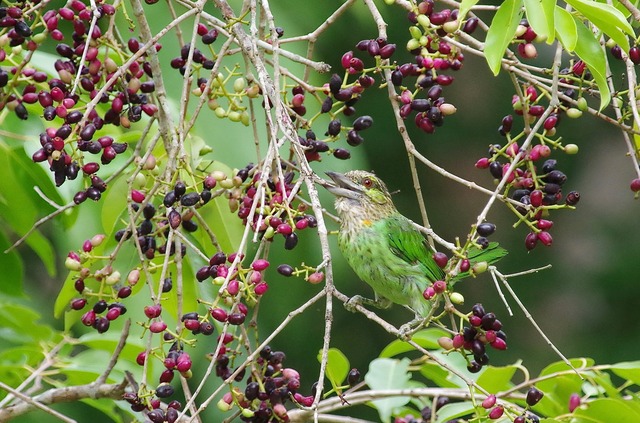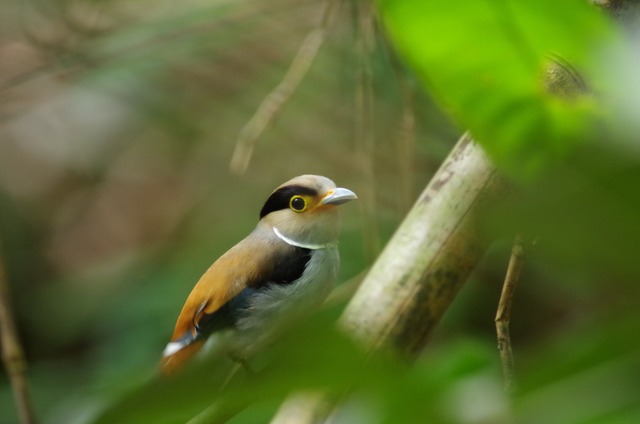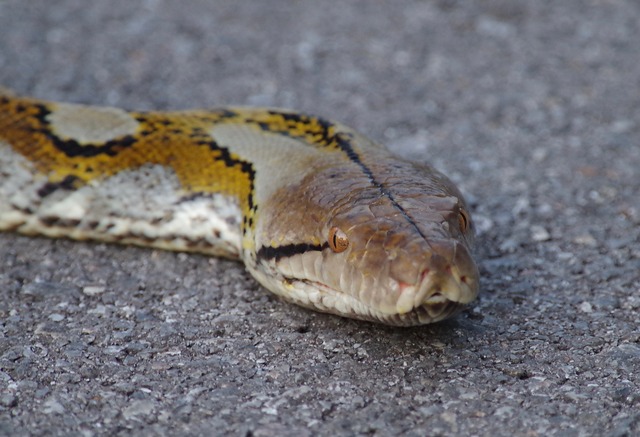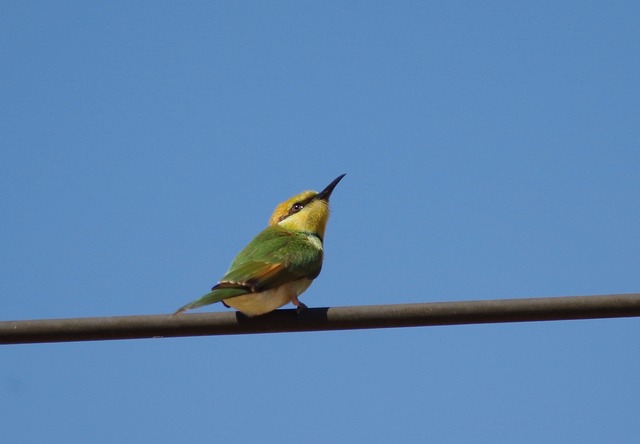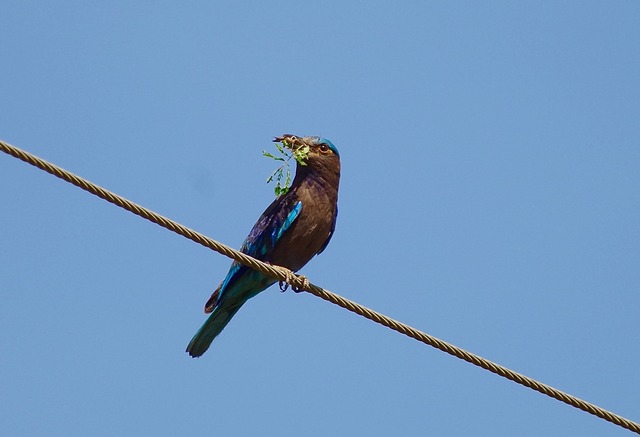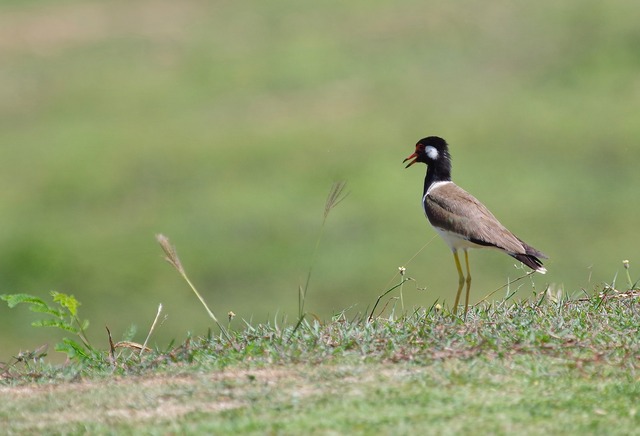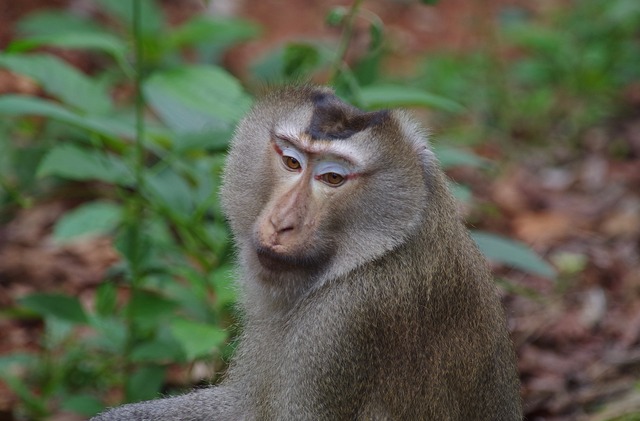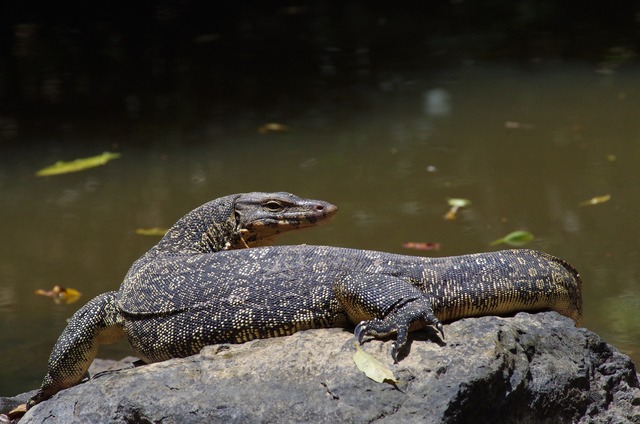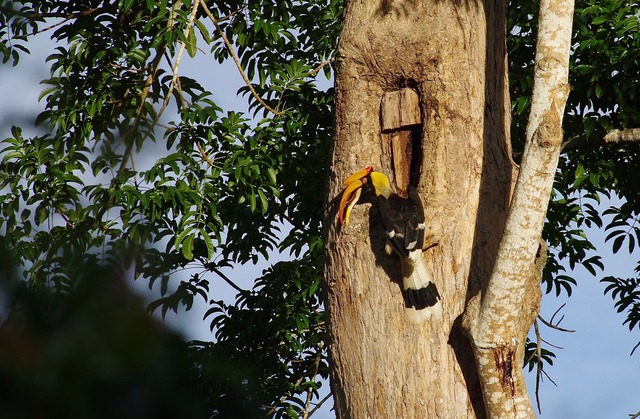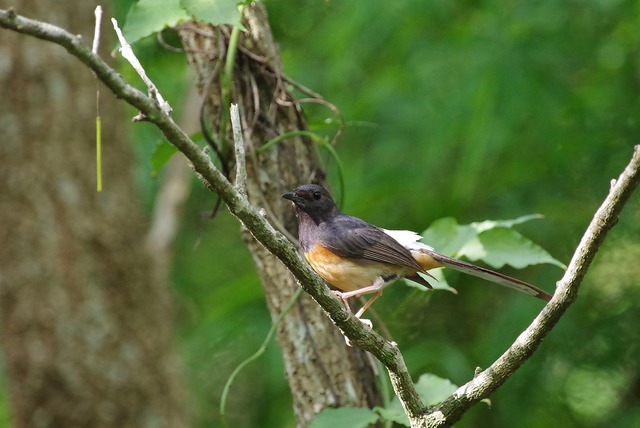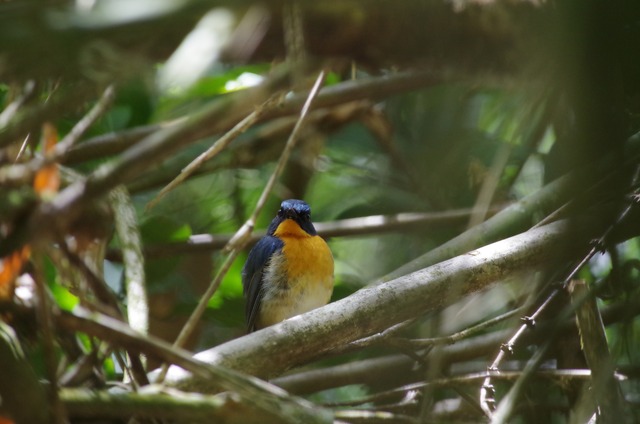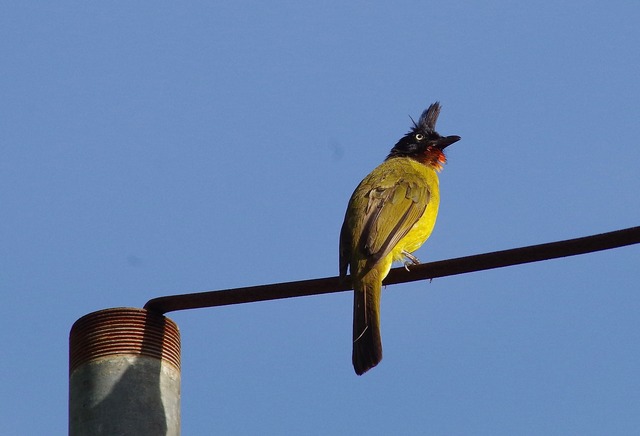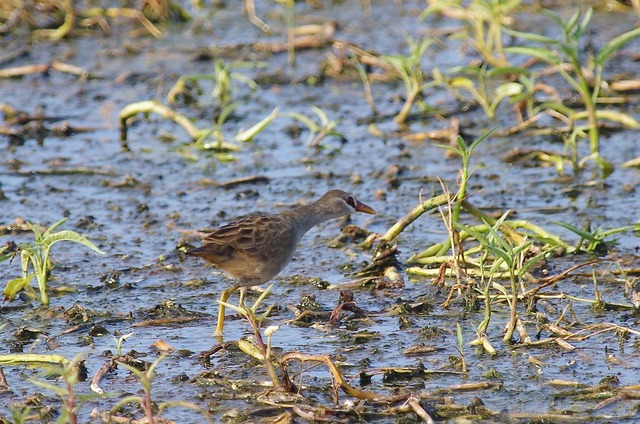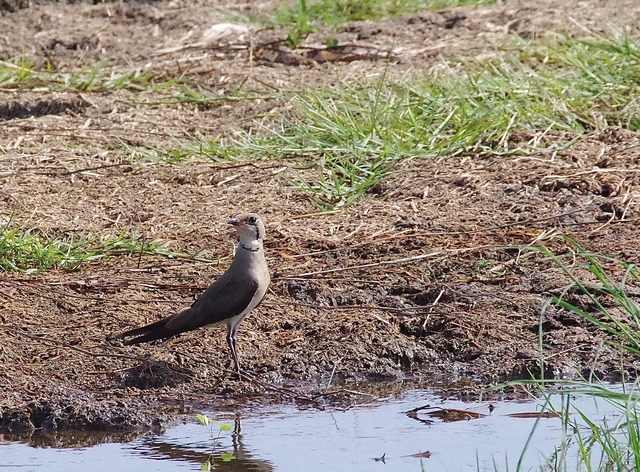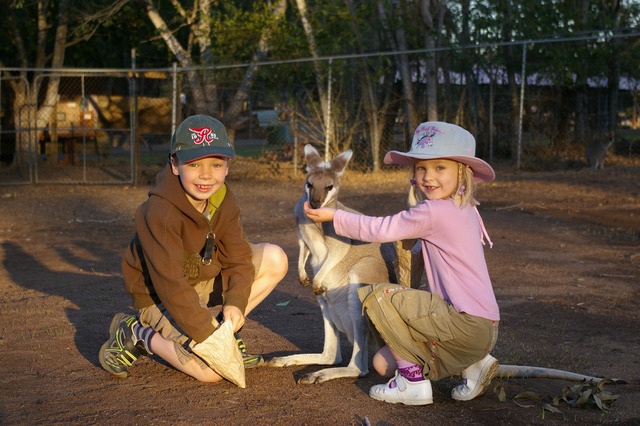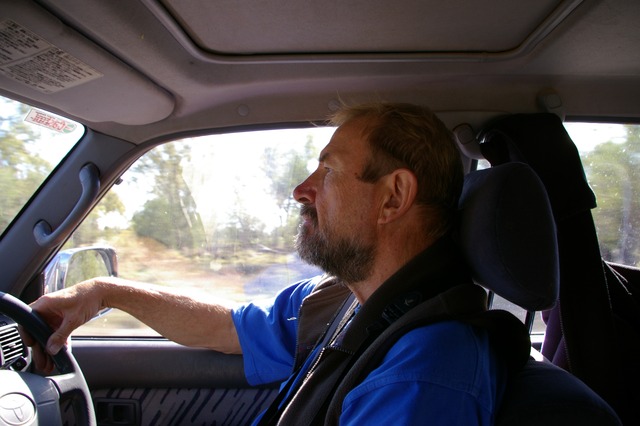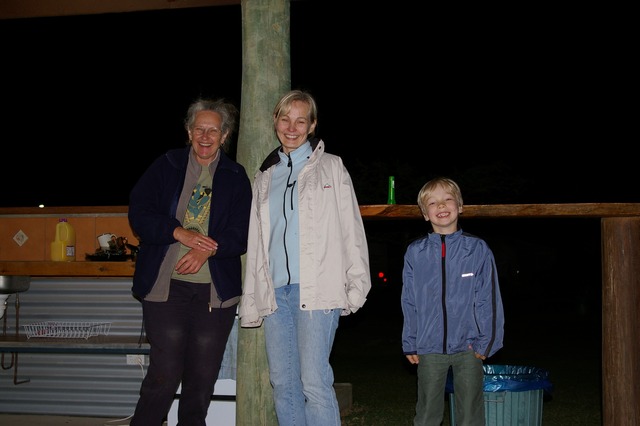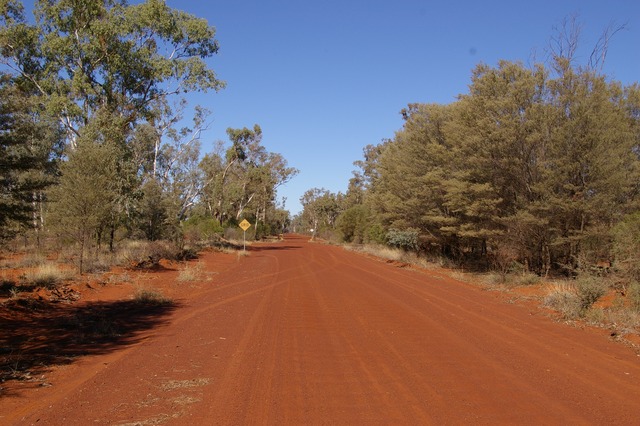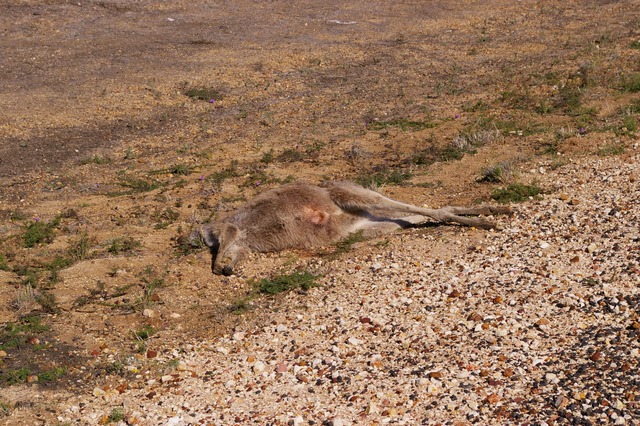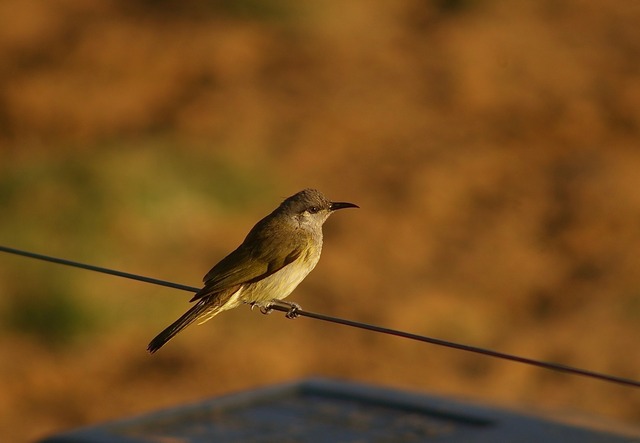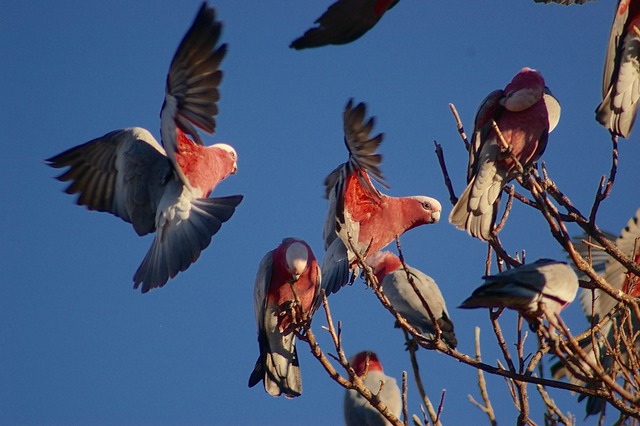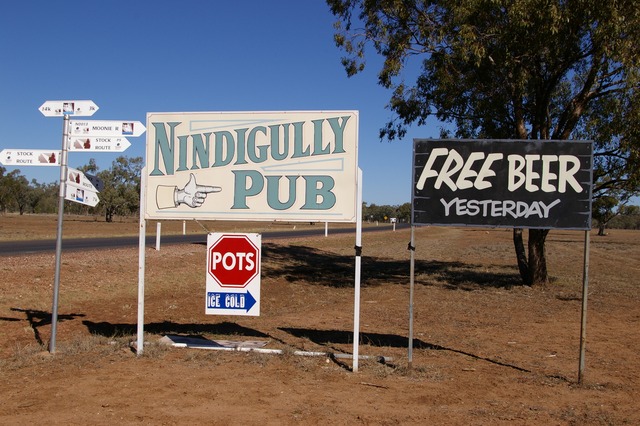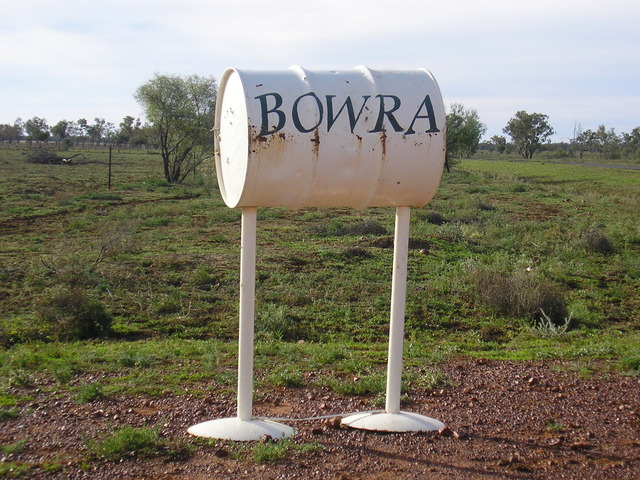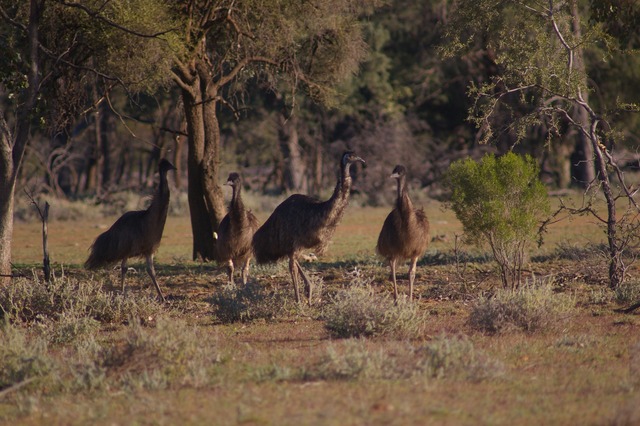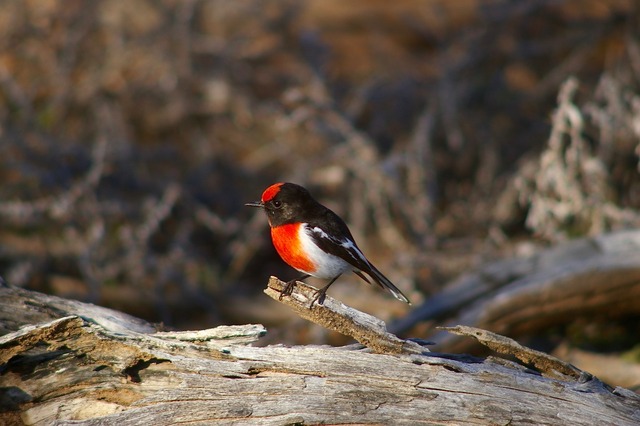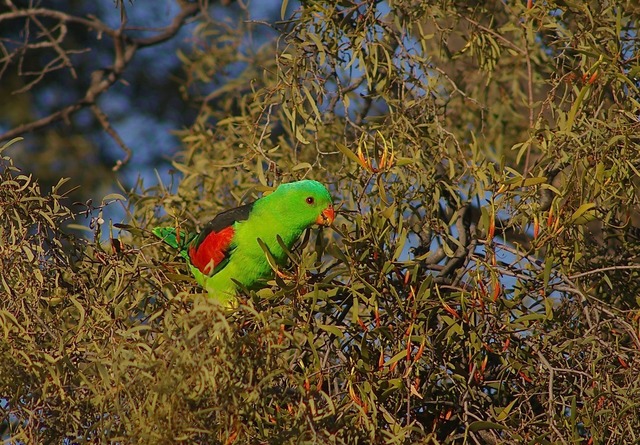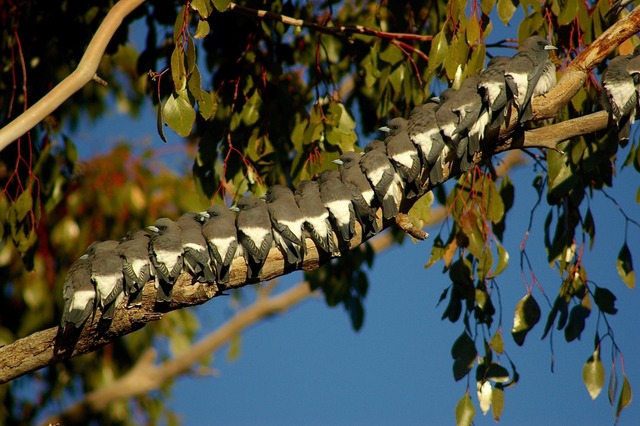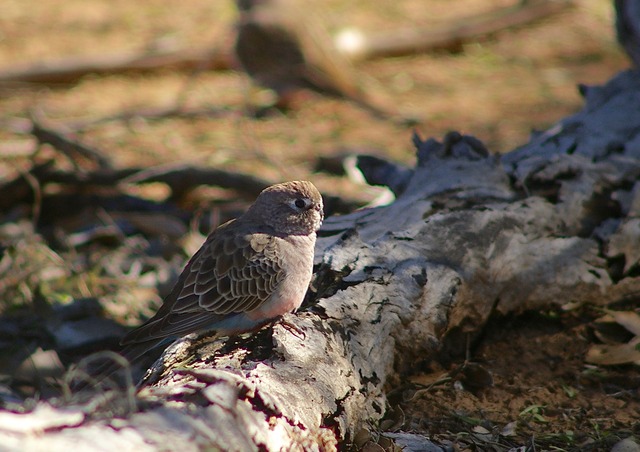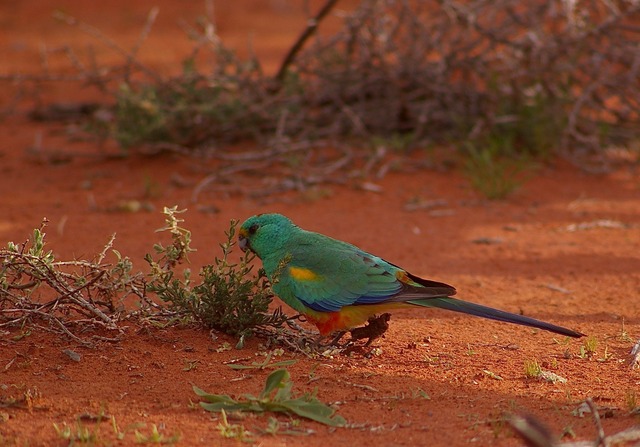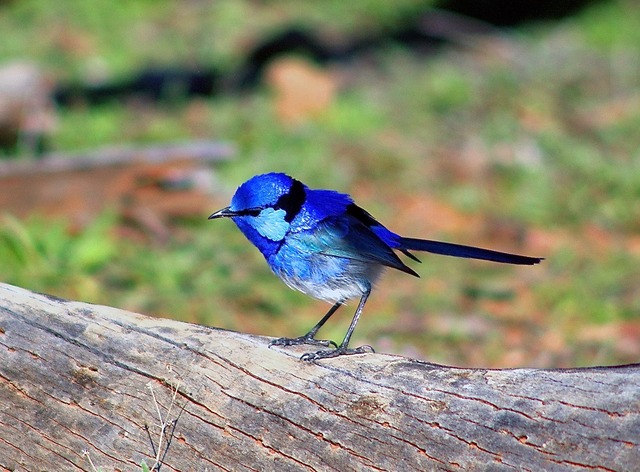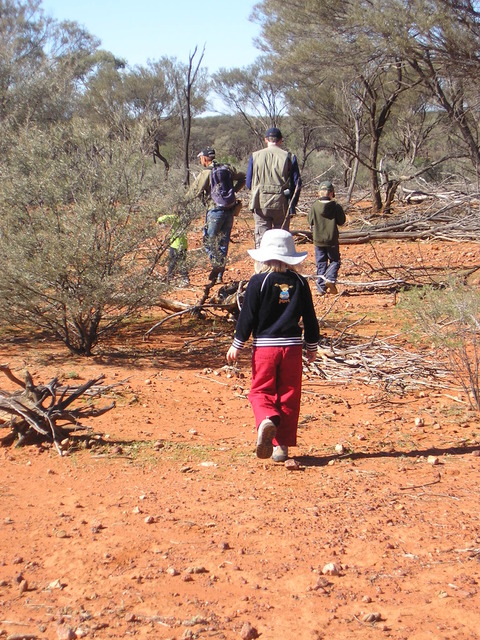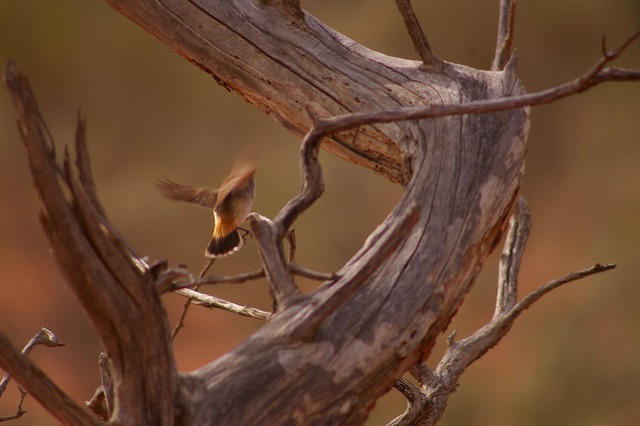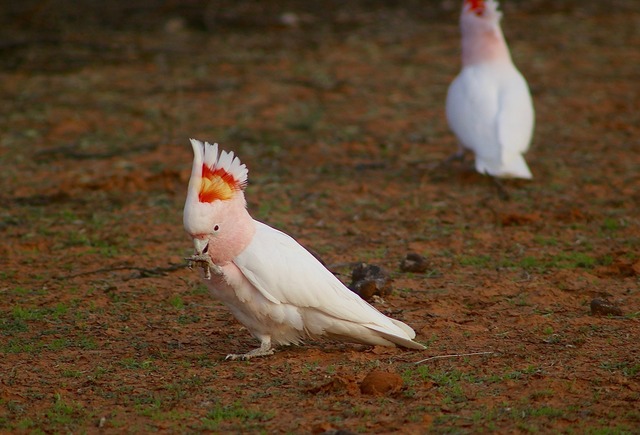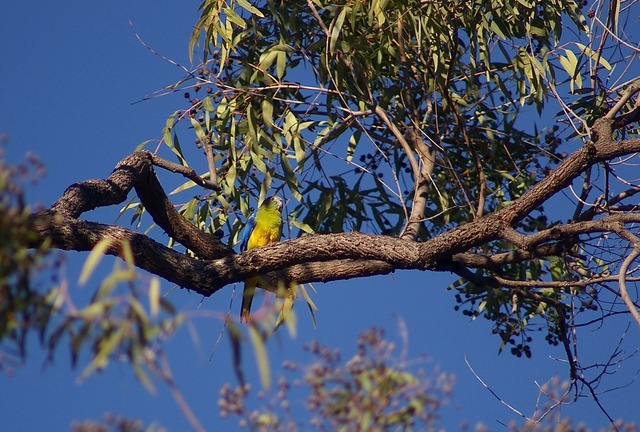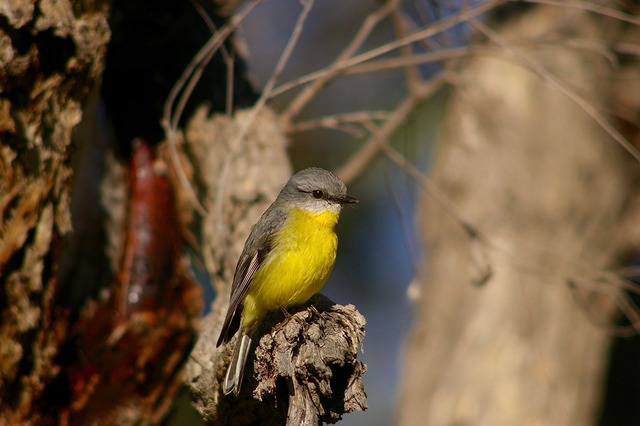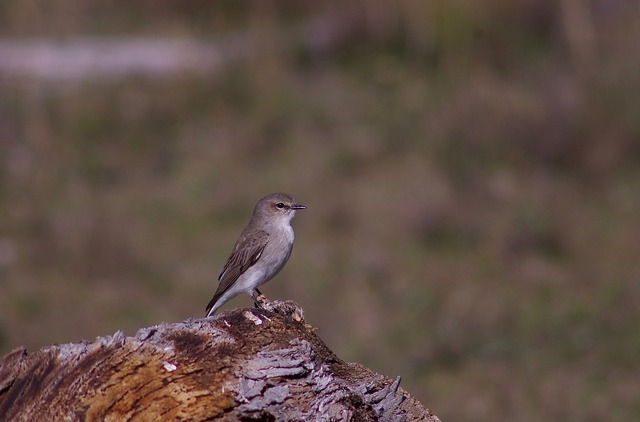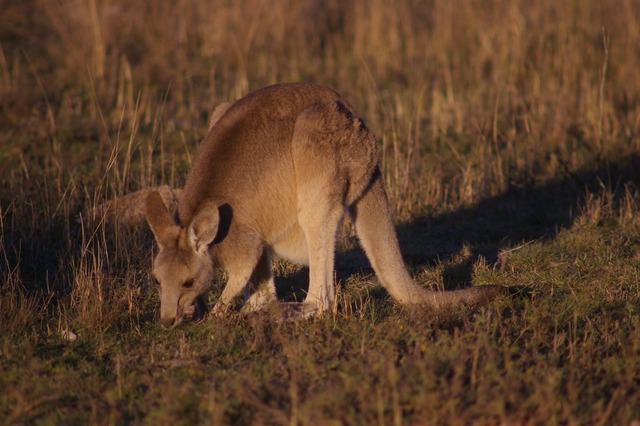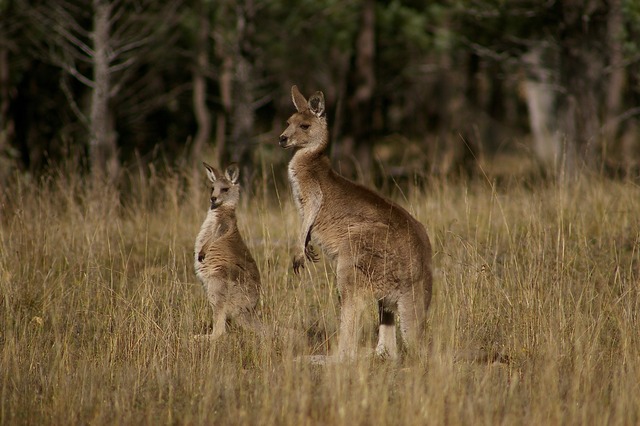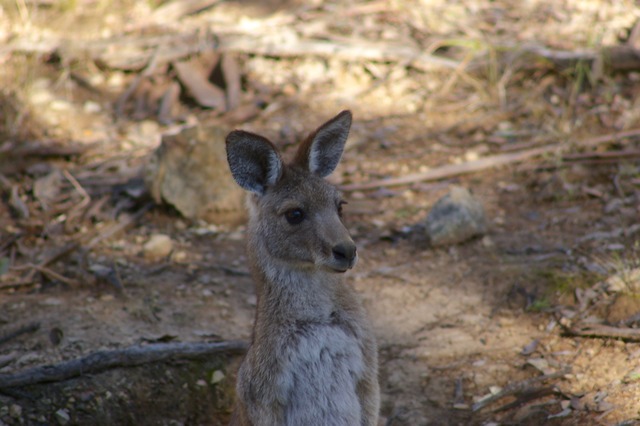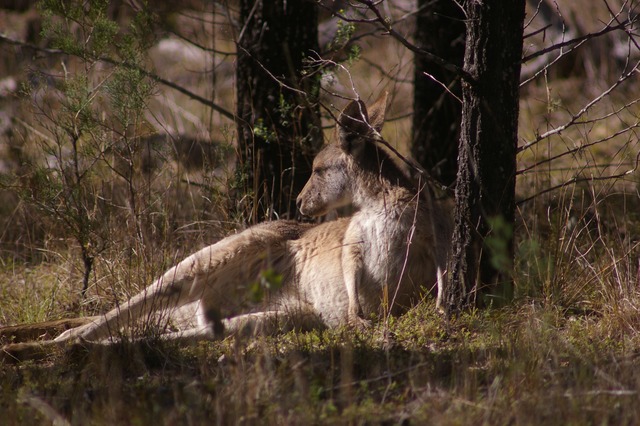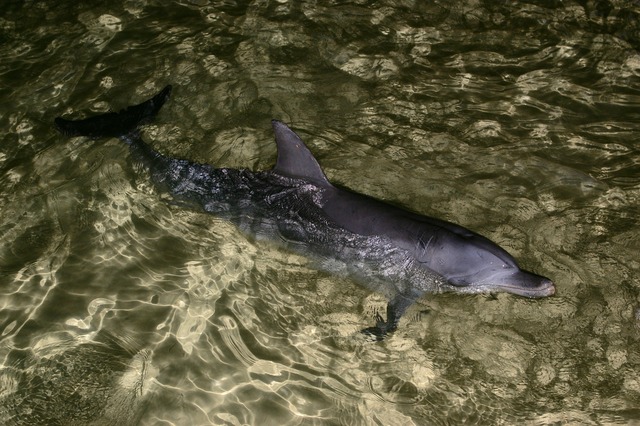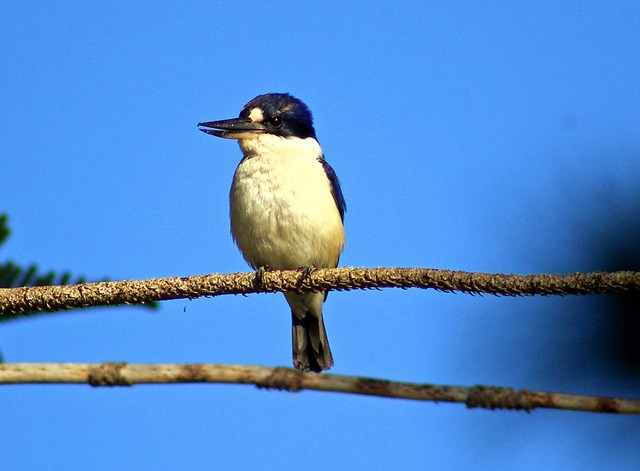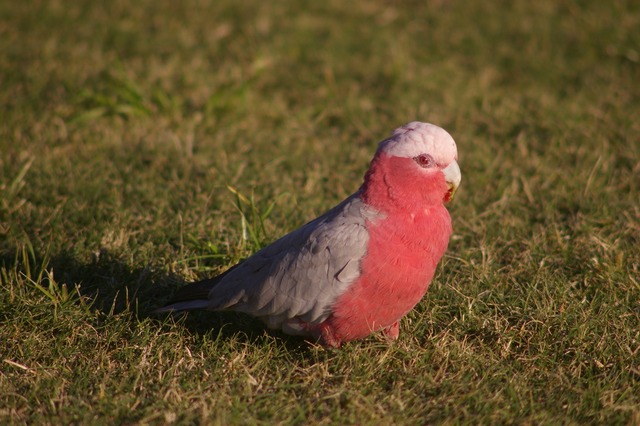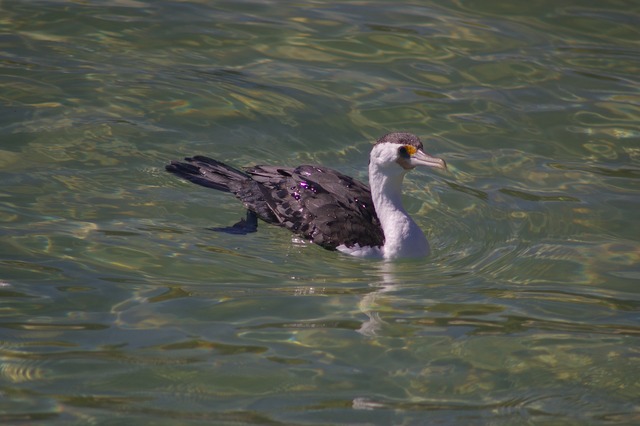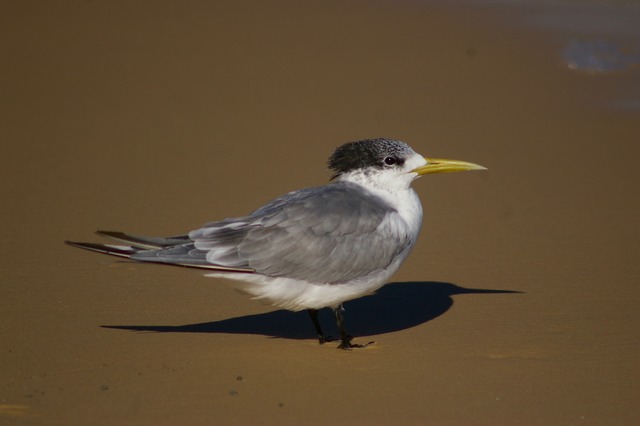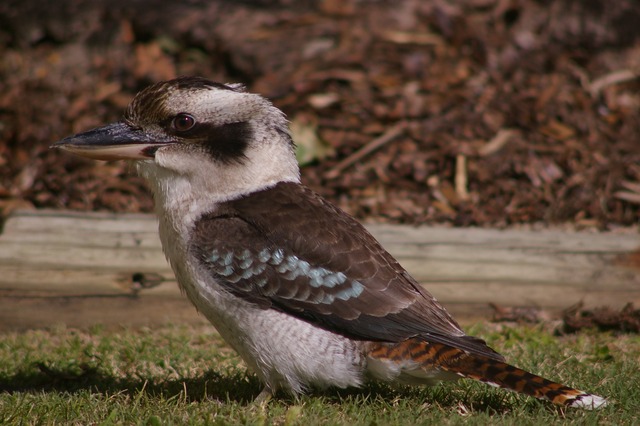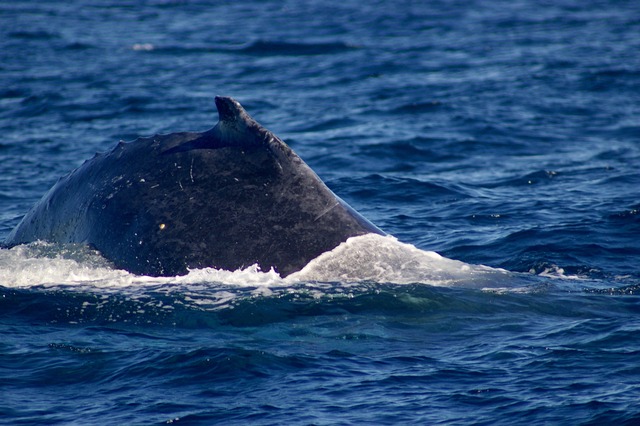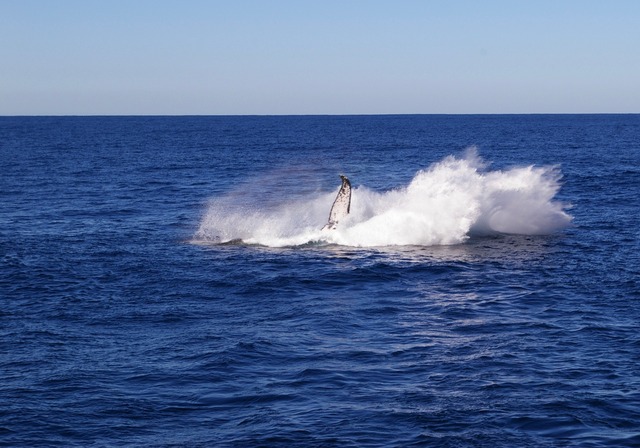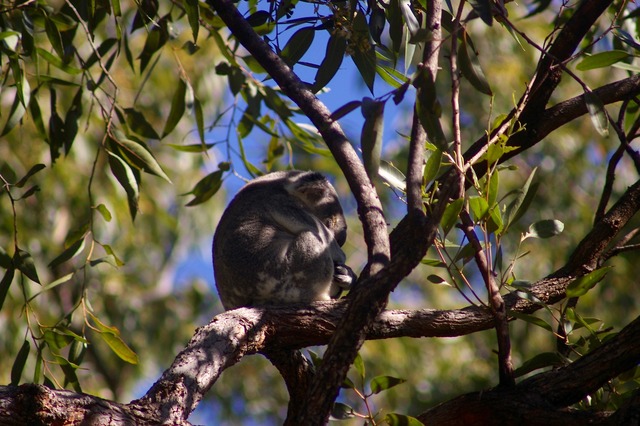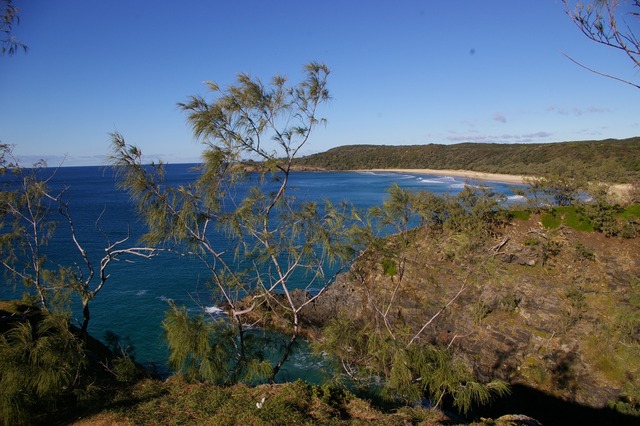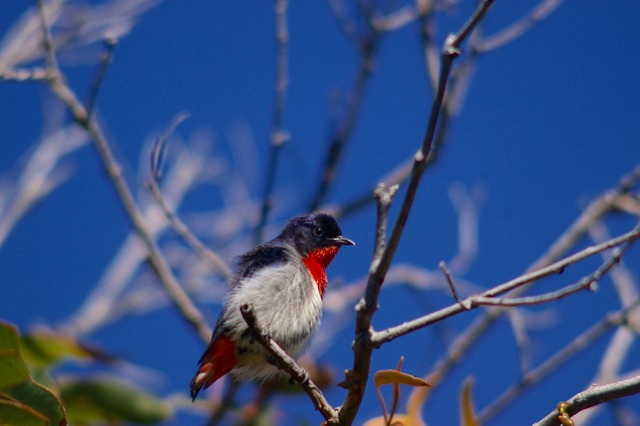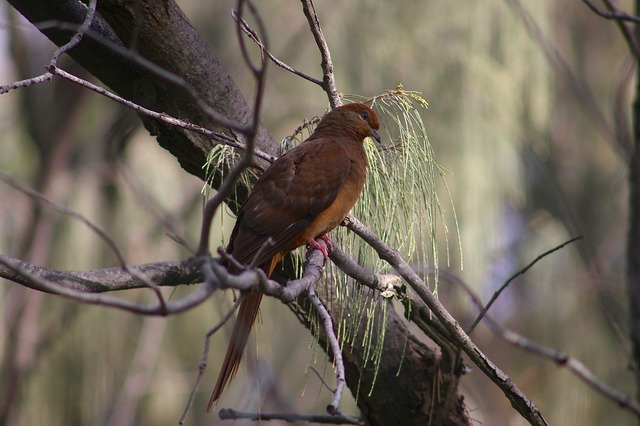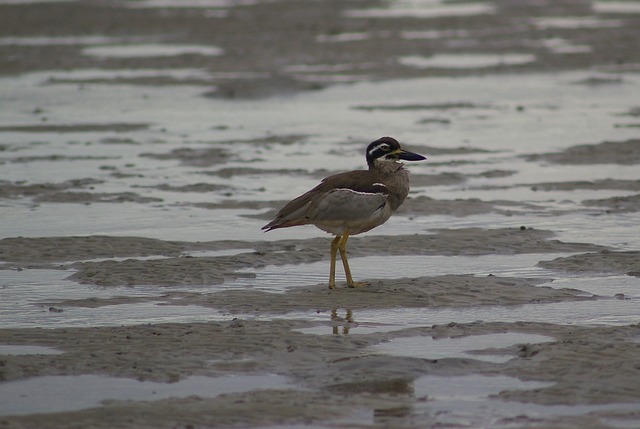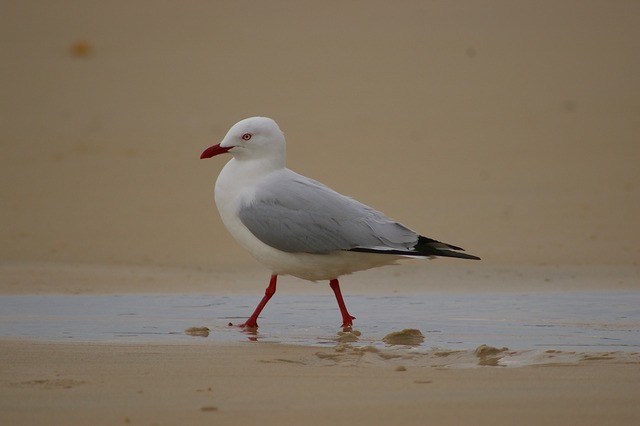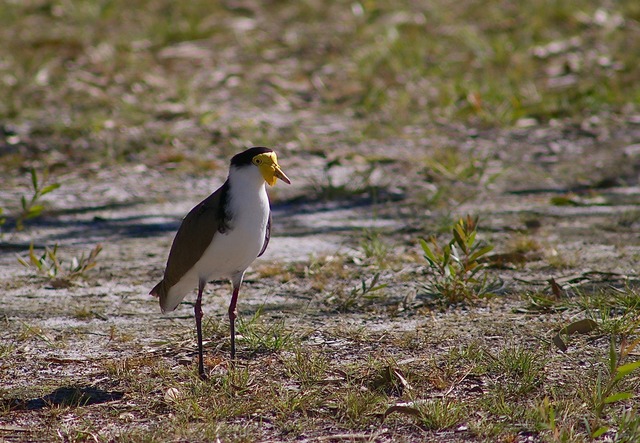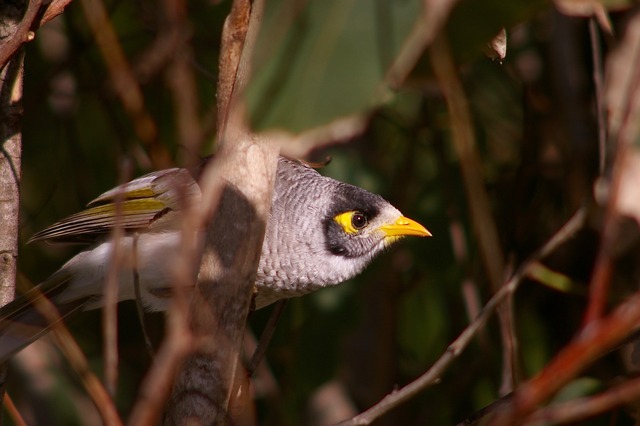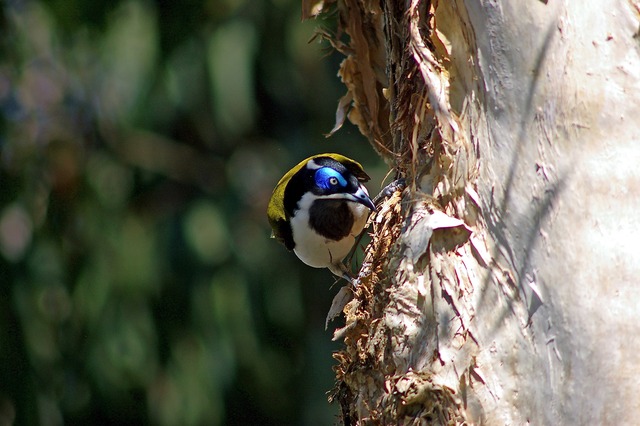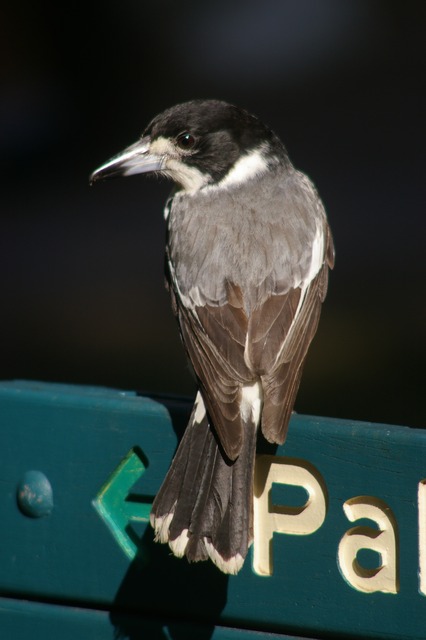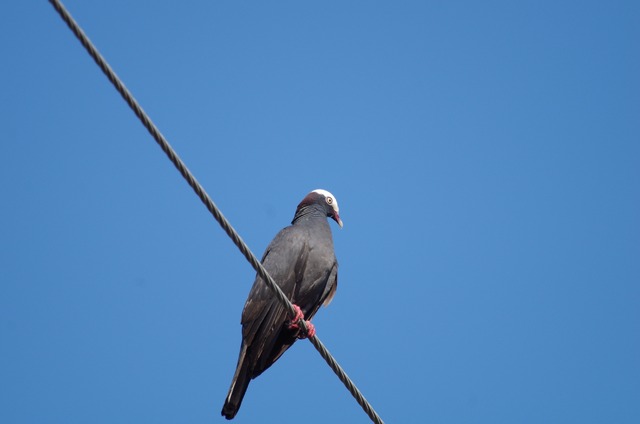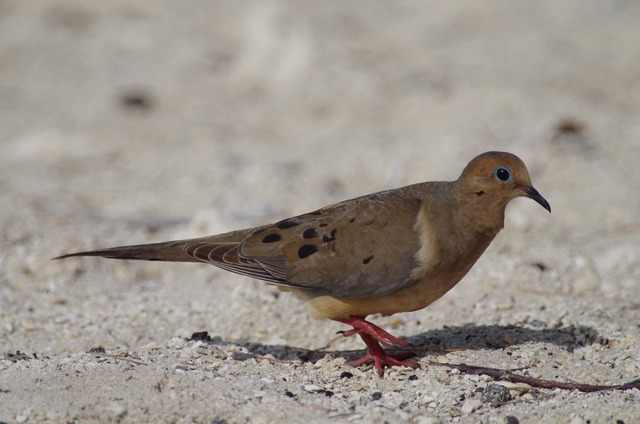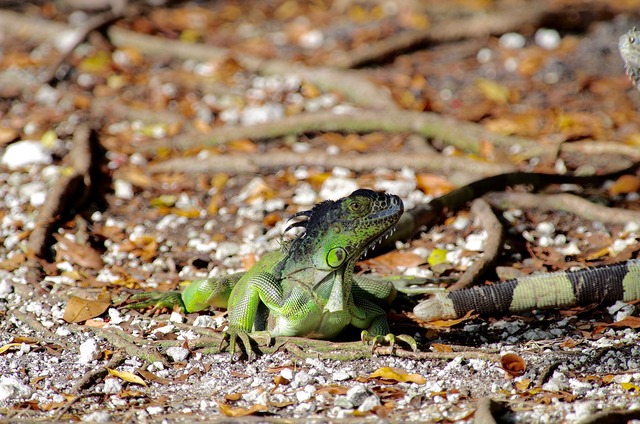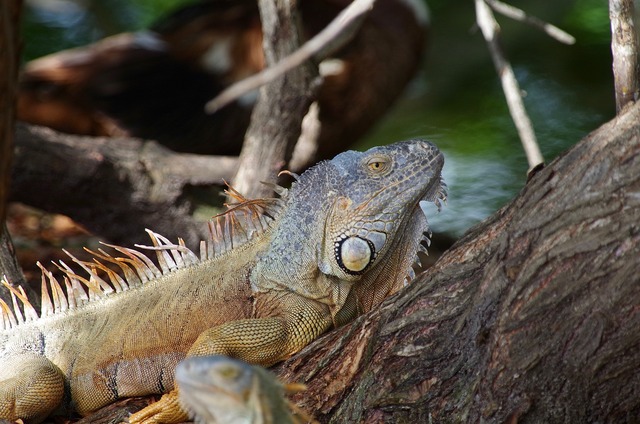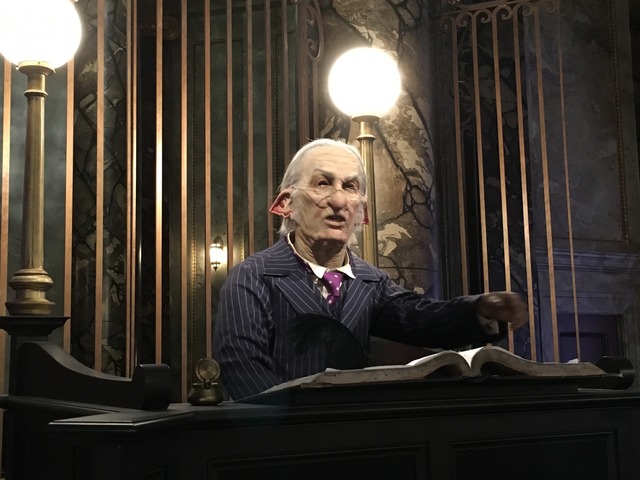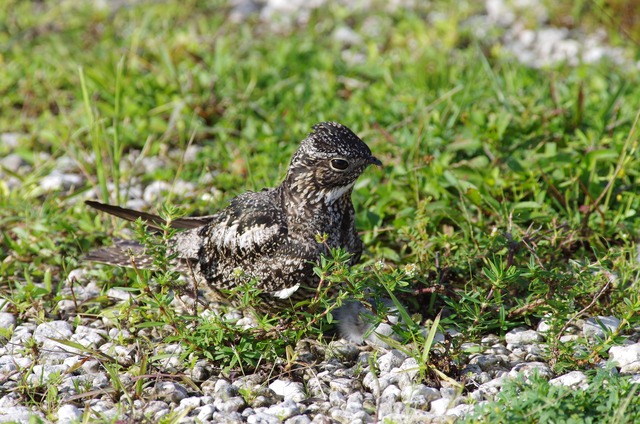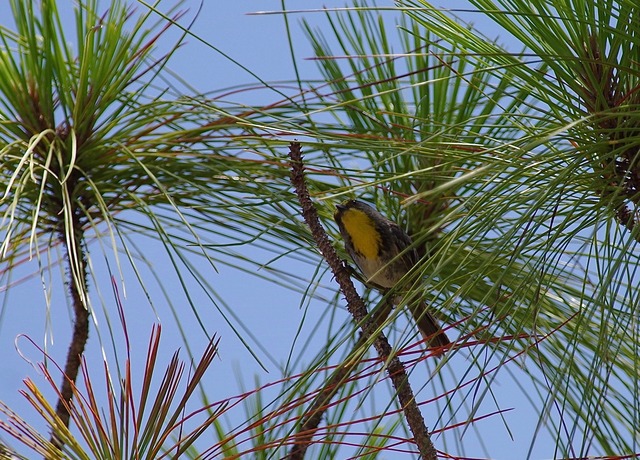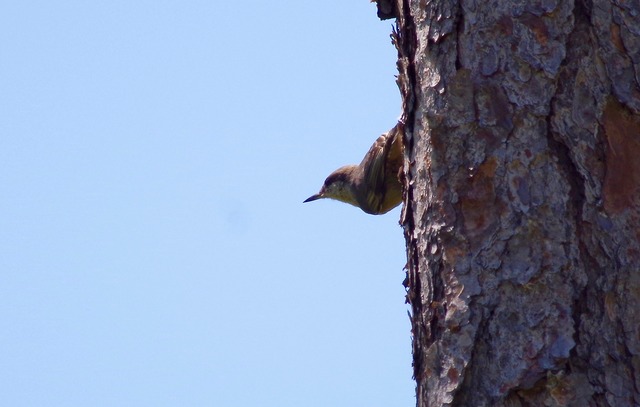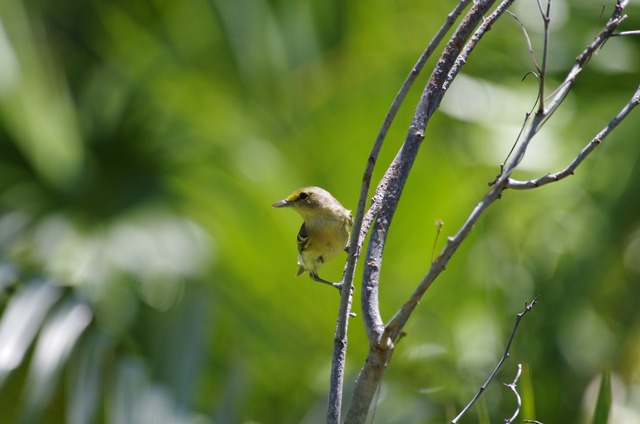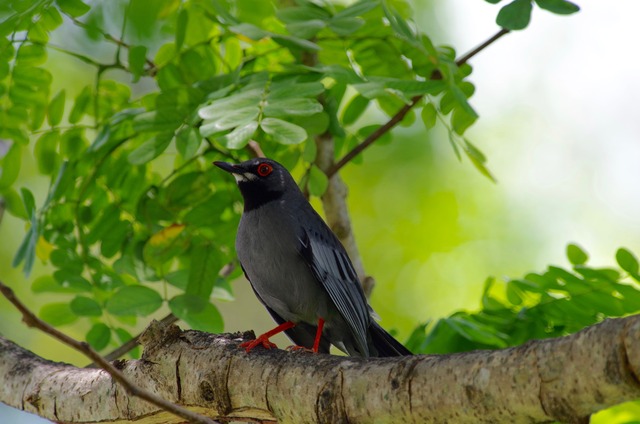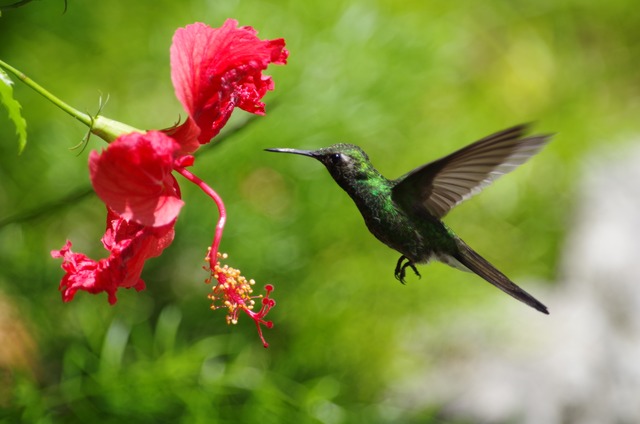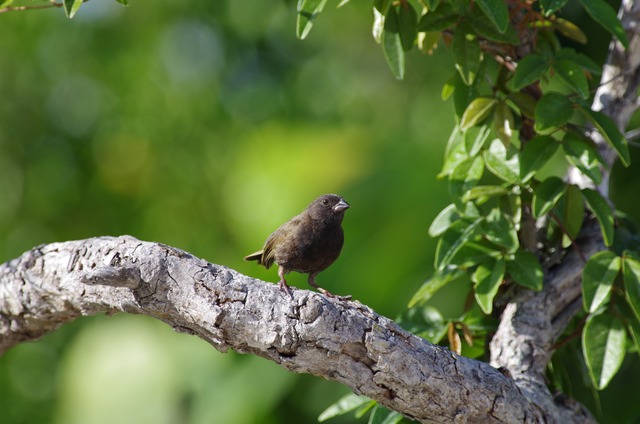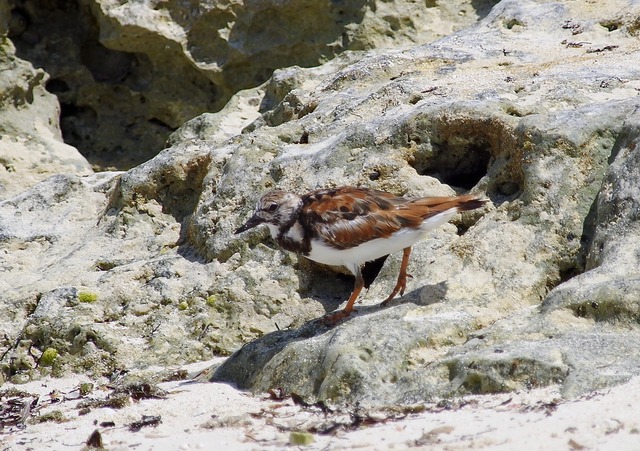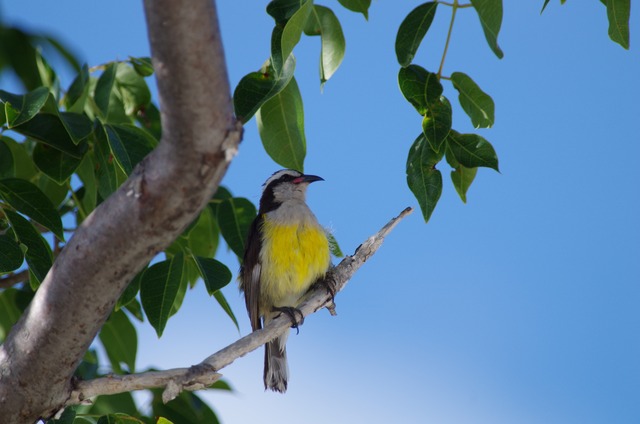Leif Rydell
California February 10
One of my favorite bird groups are the shorebirds and I therefor decided to make a trip to California during winter with my 11 years old son. Many of the "rocky shorebirds" migrate south to California from the Canadian and Alaskan coast. Also the marine wildlife is different in species because of their movements. I made some request at Birding Pal and got good contact with Jim Royer from Los Osos. Jim is an avid birder which was highly appreciated both for knowing the best locations as well as what birds to find. Jim spent a few days with me around his neighborhood and then gave me directions for some good locations when my son and I birded alone. Just outside Los Osos are some excellent rocks by the shore and we easily found both Black Oystercatcher as well as Black Turnstone and (Surfbird).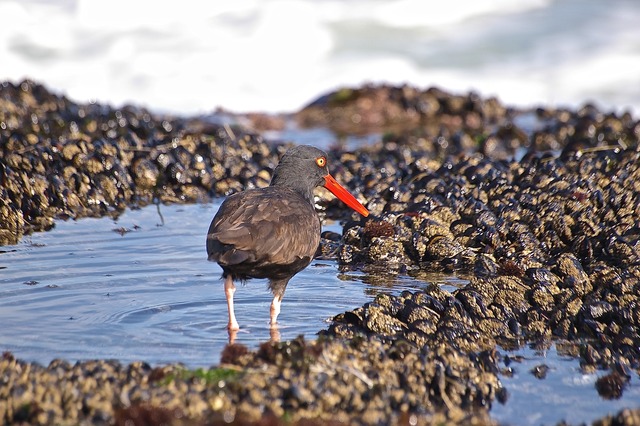
At a beach close by he showed us the very cute Snowy Plover as well as the tiny Least Sandpiper.
At this time of the year many, many gulls gather along the coast. Among all the more common ones we saw a few Heermann´s Gulls which is easily identified by its dark mantle and red bill.
One day he took us up to the Carrizzo Plain where we spotted a very much sought after bird, the Mountain Plover. I could´t come near them for good photos but here you see me watching them at this excellent birding area. Here we also saw some of the more difficult species as Le Conte´s and Sage Thrasher (no photo).
On the day we started to move north towards Monterey, Jim followed us in his car. The plan was to stop at San Simeon for the N. Elephant rookery. What amazing and odd looking animals. This place is just by the famous Highway 1 and definitely worth a stop. Our goal for the day was to try to sea one of the worlds biggest birds, the Californian Condor which survive with a few individuals further north. As we drove our hope decreased because the weather was not good, a mix of rain and mist. But for some reason the gods were with us and we saw one high up on a cliff with radio transmitters attached to it.
We arrived late to our motel for a good nights sleep. The next day we took a whale safari tour. At the harbor we saw many Californian Sea Lions and Brown Pelicans and just outside a big group of Risso´s Dolphins which has a different shape and profile compared to most other dolphins. Further out the sea was quite rough and I got sea sick. We saw some Grey Whales but not very close.
The last day we stopped at a small park half way back to L.A. Jim has told me we would have a good chance to see some geese and so we did. Not many were around but we still managed to see Ross´s and Snow (at the same photo, look at the different size of their bills) and Cackling Goose which now is considered a full species.
In this park there were also lots of Western Grey Squirrels and Brewer´s Blackbirds as well as the beautiful Am. Robin and Black Phoebe.
Full bird list of the trip.
Birds
- Snow Goose. One single bird seen at a recreational park in Santa Maria. Jim knew about the place.
- Ross´s Goose. One bird at the same spot as above. Good possibilities to see the different characters.
- Brant. 15 birds seen on one of the many beaches we visited.
- Cackling Goose. 2 birds seen inland Los Osos
- Gadwall. 3 birds different ponds Los Osos.
- Eurasian Wigeon. 10 birds as above.
- American Wigeon. Quite common.
- Mallard. Yes
- Blue-winged Teal. Common
10. Cinnamon Teal. Quite common.
11. Northern Shoveler. Totally 4 birds seen around Los Osos.
12. Northern Pintail. Totally 8 birds seen.
13. Green winged Teal. Common.
14. Lesser Scaup. A few at different places.
15. Harlequin Duck. One beautiful male seen quite close when we left the harbour at Monterey for a pelagic trip.
16. Surf Scooter. A few seen from beach.
17. Bufflehead. A total of 6 birds at two different locations.
18. Common Goldeneye. Quite common.
19. Hooded Merganser. 2 birds seen at Avila Beach.
20. Red-breasted Merganser. A few seen.
21. Ruddy Duck. As above.
22. Am. Coot. Quite common.
23. California Quail. Quite common around Los Osos.
24. Red-throated Loon. 3 birds seen from beach.
25. Pacific Loon. More numerous.
26. Common Loon. A few from beach.
27. Pied-billed Grebe. A total of 3 birds.
28. Eared Grebe. A few birds seen.
29. Western Grebe. About 10 birds seen from beach and around Los Osos.
30. Clarks Grebe. One bird seen together with westerns.
31. Am. White Pelican. 3 birds seen.
32. Brown Pelican. About 10 birds seen.
33. Brandt´s Cormorant. A few both Los Osos and Monterey.
34. Double-crested Cormorant. Common at both locations.
35. Pelagic Cormorant. 2 at Los Osos and a few more at Monterey.
36. Great Blue Heron. A few single birds close to water.
37. Great Egret. 2 birds around Los Osos.
38. Snowy Egret. In total 4 birds at different locations.
39. Turkey Vulture. Quite common.
40. White-tailed Kite. One single bird inland.
41. Northern Harrier. One bird at Carizzo Plain.
42. Red-shouldered Hawk. 4 birds in total
43. Red-tailed Hawk. Single birds throughout.
44. Ferruginous Hawk. 5 birds, mainly inland.
45. Golden Eagle. In total 4 birds seen at different locations.
46. Am. Kestrel. A few single birds.
47. Merlin. Up to 7 birds seen, mostly inland and Carizzo Plain.
48. Peregrine Falcon. In total 3 birds. A pair at the coast close to the Condor place.
49. Am. Condor. One proud bird seen at the top of a cliff halfway to Monterey.
50. Black-bellied Plover. One single bird at beach.
51. Snowy Plover. A total of 25 birds at two different beaches. One north of Los Osos and the other close to Santa Barbara.
- 52. Semipalmated Plover. 2 birds in the same area as the Snowy Plovers.
53. Killdeer. Widespread and quite common.
54. Mountain Plover. About 40 birds seen up on Carizzo Plain,
55. Black Oystercatcher. 15-20 birds at different beach locations.
56. American Avocet. Common at good habitats. More than 100 birds seen in total.
57. Spotted Sandpiper. Single birds seen on 3 different locations.
58. Wandering Tattler. One bird seen briefly when arriving to Santa Cruz but unfortunately disappeared when I approached to see it better.
59. Greater Yellowlegs. 2 single birds seen.
60. Whimbrel. In total 20 birds at different locations.
61. Long-billed Curlew. About 10 birds throughout.
62. Marbled Godwit. Quite common at a few locations.
63. Black Turnstone. Common at rocky beaches. 25-30birds seen.
64. Surfbird. Same spots as Black Turnstone but not as common. Aprox. 10 birds seen.
65. Sanderling. Common at beaches, about 80 birds in total.
66. Western Sandpiper. A few at close distant (more than 300 seen at distant which were mixed with Least Sandpiper, did not spend time to decide each bird)
67. 5 birds at close distant (see above).
68. Bonaparte´s Gull. About 10 birds throughout.
69. Heerman´s Gull. About 30 birds at different beaches of this elegant gull.
70. Mew Gull. A few, not fully counted.
71. Ring-billed Gull. Common.
72. Western Gull. Common.
73. Herring Gull. 2 birds found amoung all the big flocks.
74. Glaucous-winged Gull. 4 birds seen at two different beaches.
75. Glaucous Gull. 1 single bird made Jim excited at the Elephant Seal Colony.
76. Caspian Tern. 4 birds seen.
77. Forster´s tern. Totally 8 birds.
78. Common Murre. 20 birds seen up in Monterey, whale watching.
79. Rhineceros Auklet. 2 birds on the whale watching tour.
80. Rock Pigeon. Yes.
81. Band-tailed Pigeon. 20 birds seen at inland location.
82. Eurasian Collared Dove. Seen throughout with single birds.
83. Mourning Dove. As above.
84. Barn Owl. One bird in “stake-out-tree” near the university at San Luis Obispo.
85. Western Screech-Owl. 3 birds heard during owling outside Los Osos.
86. Great Horned Owl. As above.
87. Northern Saw-whet Owl. 5 birds at the same route as above.
88. White-throated Swift. About 10 birds inland on the way to Carizzo Plain.
- 89. Anna´s Hummingbird. About 5 birds seen at different locations.
90. Allen´s Hummingbird. The same as above.
91. Acorn Woodpecker. A few birds at a few different locations.
92. Nuttall´s Woodpecker. In total 3 birds seen at different places.
93. Northern Flicker. A few birds throughout.
94. Black Phoebe. In total 3 birds seen.
95. Say´s Phoebe. About 5 birds at different locations.
96. Loggerhead Shrike. 3 birds seen throughout.
97. Hutton´s Vireo. Two birds just north of Los Osos.
98. Western Scrub-Jay. 8-10 birds throughout.
99. Yellow-billed Magpie. 4 birds seen at a valley on the way to Carizzo Plain.
- American Crow. Quite common.
- Common Raven. A few birds.
- Horned Lark. Aprox. 20 birds up on Carizzo Plain.
- Tree Swallow. A few birds seen.
- Chestnut-backed Chickadee. 4 birds near Jims house and 10 more at other locations.
- Oak Titmouse. One single bird at an inland park.
- Bushtit. About 10 birds throughout.
- Pygmy Nuthatch. 3 birds just north of Los Osos.
- Brown Creeper. Same as above.
- Bewick´s Wren. 2 birds around Los Osos.
- Ruby-crowned Kinglet. In total 5 birds at two locations.
- Wetern Bluebird. 2 birds inland Los Osos.
- Mountain Bluebird. 10 birds seen up on Carizzo Plain.
- Hermit Thrush. 3 birds north of Los Osos.
- American Robin. Quite common, about 30 birds in total.
- Northern Mockingbird. Quite common, about 10 birds in total.
- Sage Thrasher. Jim managed to tape in 2 birds up on Carizzo Plain.
- California Thrasher. 3 birds at 2 different seed feeders.
- Le Conte´s Thrasher. A pair seen after some hard searching at Carizzo Plain.
- European Starling. Yes.
- American Pipit. 1 single bird seen on Carizzo Plain.
- Phainophepla. I bird seen on the road up to Carizzo Plain.
- Yellow-rumped Warbler. About 6 birds seen throughout.
- Townsend´s Warbler. Also this warbler was seen with 6 examples at different locations.
- Common Yellowthroat. 3 birds seen.
- Spotted Towhee. 7 birds seen throughout.
- California Towhee. As above, likes feeding places.
- Vesper Sparrow. On single bird seen up towards Carizzo Plain.
- Lark Sparrow. A few single birds.
- Sage Sparrow. Up to 10 birds seen.
- Fox Sparrow. 1 single bird close to Jim´s house, Los Osos.
- Song Sparrow. Heard a few times.
- White-crowned Sparrow. Quite common.
- Golden-crowned Sparrow. 3+2 birds seen Los Osos and Monterey.
- Dark-eyed Junco. More than 10 birds throughout.
- Red-winged Blackbird. Quite common.
- Tricolored Blackbird. A few birds seen up towards Carizzo Plain.
- Western Meadowlark. A few birds throughout.
- Brewer´s Blackbird. 10 birds Santa Cruz.
- Great-tailed Grackle. 1 bird seen Santa Maria.
- Brown-headed Cowbird. Several.
- Purple Finch. Quite common.
- House Finch. A couple of birds at some feeders.
- Lesser Goldfinch. In total 13 birds at different locations.
- American Goldfinch. 7 birds seen.
- House Sparrow. A few.
Western USA summer 2010.
This was my third trip to the USA and the purpose was to drive with my family from L.A to Seattle making a detour to Yosemite National Park. I did not count in many new birds but really enjoyed this trip for the other wildlife I saw. An obvious start for the family was a day at Disneyland which was great. We like to visit the amusement parks. Then we drove up to Jim Royer, who I had met as a birding pal earlier this winter in February when I visited California for some winter birds for this region. Jim lives in Los Osos which is by the coast just before the scenic Highway 1. My son is interested in snakes so I had asked Jim if we possibly could see a rattle snake. Very close to his house we found this Western Rattlesnake just next to the path where everybody is walking and running.
Common birds is this area are also the handsome White-crownes Sparrow and the Killdeer.
We spent a few days with Jim and his lovely family before we headed north toward Monterey which is an eldorado for marine wild life. On the way we stopped at San Simeon which has a rookery for Elephant Seals. At very close range you can spot these great animals. However, at this time of the year not many were present and just a few big males. When I visited in February, the place was cramped with individuals. I really recommend a stop here if you are passing by.
At Monterey we took a whale safari to look for Humpback Whales. The weather was not very nice but we saw a few individuals quite close. We had also hoped for a Blue Whale, which they had seen the day before.
Easier to see and also whiteout risking to bee sea sick are all the Californian Sea Lions that are dotted around the harbor. Depending on what time of the year you visit this place you will see different birds and mammals but it´s always worth the trip.
We left Monterey for the stunning national park of Yosemite. It´s is an amazingly beautiful spot (even if it is too crowded at the center) and the vistas at some places are unforgettable. We took a steep walk up to one of the waterfalls and up there I saw this brilliant Steller´s Jay.
If you ever go here you must also drive up to the higher levels as the park changes in structure. From here we had a very long drive (10 hours) to a small town at the coast. We then followed the highway along the coast and reached the small scale town of Seaside. However, this town is a magnet for people on the 4th of July and we had such a wonderful experience this day, my daughter even won a cake on a lottery.
Later in the evening there was a magnificent moment of fire works which ended this great day.
From here we continued north to Port Angeles which is situated north of Olympic National Park and also the gateway to Canada. One morning I took a walk high up in the park and saw some good birds though I did´t get any pictures. This White-tailed Deer was seen together with some great views.
One of my biggest goals (when it comes to seeing wildlife) was to see Orcas. Therefor we had made a booking at San Juan Island (where the film "Free Willy" was partly filmed). To increase the possibility to see one you need to take a tour with any of the "whale watching" companies on the island. We saw a family of 8-9 individuals. Even if were not lucky enough to see them breach one male made a "run" towards our boat which is a uncommon behavior.
If you are short of money or dislike being at sea you could sit on the southern coast of this island and maybe see them from here. We had a magic evening with sun set and no wind as a family of Orcas passed by and showed us their beautiful bodies.
Bye for now!
Thailand June 16
Between June 4th-11th I spent 8 days birding in central Thailand. My 2 very good friends Jim Royer and Nick Armstrong joined me. Jim lives in Los Osos, California. Nick used to be his neighbor but has now moved back to good old England. We have made some previous trips as well and enjoy birding together. As I favor the Pittas I had some good expectations about seeing 3-4 of them as it is breeding time. The trip was great except for the fact we only saw one, the Blue-winged Pitta. Blue Pitta was heard many times and at one occasion we were so close that we couldn´t believe we didn't see it. As we drove out of Bangkok, our first stop was the wetlands at Petchaburi Rice fields. Here we had a good number of "open areas" birds. Many different Herons were seen as well as all 3 Weavers. Below you see the common Javan Pond Heron flying as well standing next to the much rarer Chinese Pond Heron together with some more
common Egrets.
Birding at locations like this is quite easy as long as you know your birds pretty well. Here the most handsome of the weavers, the Asian Golden Weaver.
Also common in this type of landscapes is the Asian Openbill Stork, which really has been given a correct name.
From here it´s quite close to the world famous Lam Pak Bia, where usually a few Spoon-billed Sandpiper is seen during winter. Of course we didn´t see any of these but we were lucky enough to spot both Greater Sand and Mongolian Plovers in breeding plumage as well as some other "summering" shorebirds. We followed the coast down to some traditional birding spots and managed to see this beautiful Green Bee-eater and some nesting Little Terns.
From here we had a few hours drive to the edge of Kaeng Krachang national park. This park is the biggest in Thailand and supports many good birds as well as the big mammals like tigers, bears and elephants. Seeing one is not likely though. Wildlife watching is usually limited to the main road and just small short tracks that are related to this road. Birding in the jungle is so much more difficult and can be really frustrating. Because of this we hired a local guide, Pia. His english is poor but he knows the birds and were to spot them and he is also polite. Compared to other countries, he is also quite cheap. We stayed 4 nights at the very nice Ban Maka chalets which is located just a few minutes drive from the park gate. We had early breakfast here and then took som lunch boxes with us with some standard nodles. Birding at Ban Maka can be really good and it was here we saw all the Blue-winged Pittas.
Ban Maka at 05.00.
Me and Nick with our guide Pia at the "top" at Kaeng Krachang. Myanmar in the back ground.
As said before, birding is hard in the jungle which makes photographing difficult. Still I managed to get some pictures of a few star birds. Below you see the Red-bearded Bee-eater, the very cute Black-backed Dwarf Kingfisher and the softly colored Buff-rumped Woodpecker.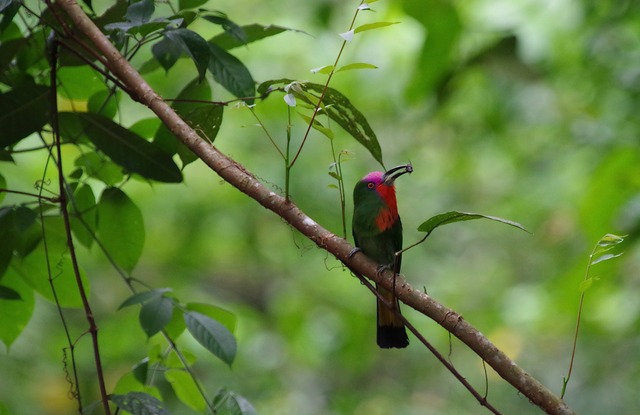
One thing that surprised me here was the enormous amount of butterflies. I have never seen anything close to this. I´m not exaggerating but there must have been 100.000 of these and maybe millions. Apparently, this is a major reason for photographers from all around the world to visit this park. In this case photos can´t do justice to the real world but these 2 pictures maybe gives you a small idea of this great nature phenomena.
Even if we did´t see any larger mammals we were lucky enough to spot some Gibbons and Leaf Monkeys. This Dusky Leaf Monkey showed interest in us when we made a short stop climbing up the hill at Kaeng Krachang.
At two times we also had decently close looks at the White-handed Gibbon, here in two different phases. The song of the Gibbons are truly one of the main songs in asian jungles, just great.
As we climbed further up the hill we saw our first raptor, a Crested Serpent Eagle which is the one most likely to encountered.
At the end of the drivable road at the parking for Tor Tip Waterfall we had great luck in seeing a pair of the rare Black Eagle soaring above us.
Up at the top we had lunch most days and next to the tables this Little Spiderhunter was feeding.
Right at the visitor centre there is an open space for camping but also some trees with fruits. This Green-eared Barbet had a feast with a few others. Not far from here in denser forest we also saw the brilliant Silver-breasted Broadbill.
One evening when we left the park (you have to be out before 19.00) this stunning Reticulated Phyton was warming up its body. It just lied there and didn´t want to move so we had to pull it away in its tail. Just another great experience.
Jim enjoying the Phyton.
When then started the long drive towards Khao Yai north east of Bangkok where we had booked us in to the upscale Balios resort. But just outside Ban Maka we saw this Chestnut-headed Bee-eater together with the colorful Indian Roller. On the open ground the common Red-wattled Lapwing showed nicely.
The Balios resort had a good deal for the room and it´s conveniently located just 5 minutes drive from the park. The also have a swimming pool which was great after 5 days of full birding.
Khao Yai is different in habitat even if the remote areas are full jungle where possibly tigers still roam. There are of course patches of rainforest here as well but you will also find several open areas with its own special birds. This park is also much more touristic and therefor you should avoid it during the weekends. The birding was also much slower here but still we saw quite a few new species. In this park the Pig-tailed Macaque is abundant as well as this Water Monitor Lizard next to the visitor centre.
Our first morning we had great views of Great Hornbills at nest, what a bird and powerful sound.
In the more dense forest White-rumped Shama is quite conspicuous and flew around us when we tried to see the Blue Pitta. A much harder bird was this Hill Blue Flycatcher we saw at high elevation.
The quite common Black-crested Bulbul has a special mark (race) in this park compared to the ones further south. It has a clear red spot on the throat.
Our last day we drove south of Bangkok to the Muang Boran Fish Ponds which is a great place for waterbirds and other species related to this type of habitat. However, don´t go here in your own car unless you have a GPS. There are so many small and narrow roads to pass before you find it. You can also bird it from two directions which will give you some different chances. At one spot we had 7 White-browed Crakes walking in a muddy area. This place is also full of the marvelous Oriental Pratincole of which we saw more than 100 individuals. A great place to finish a great trip.
Full species list.
Khaeng Krachang=KK, Khao Yai=KY, Petchabury Rice Fields=PRF, Pak Thale/ Lam Pak Bia=PT, Munang Boran Ponds=MB and Khao Lok Chang=KLC
Birds
- L. Whistling Duck. About 40 PRF and 2 MB.
- Cotton Pygmy Goose. 30 PRF and 15 MB.
- Scaly-breasted Partridge: A family heard KK
- Red Junglefowl. 2-4 seen both KK and KY
- Kalij Pheasant. 2 males KK
- Little Grebe 15 PRF and common MB.
- Asian Openbill. Common in suitable habitat.
- Painted Stork. About 10 birds south PT and 10 more at KLC.
- Milky Stork. One single bird south PT.10. Indian Cormorant. 3 seen at different spots PRF
10. Indian Cormorant. A few
11. Little Cormorant. Much more common.
12. Yellow Bittern. 1 seen flying at PRF and one more at MB.
13. Cinnamon Bittern. One seen flying which gave good looks and identification.
14. Purple Heron. One PRF.
15. Great Egret. Not counted, probably common.
16. Intermediate Egret. One bird seen PRF, maybe overlooked.
17. Little Egret. Se above.
18. Cattle Egret. Common.
19. Chinese Pond Heron. “ in full breeding Plumage PRF.
20. Javan Pond Heron. +100 in the areas around PRF.
21. Crested Serpent Eagle. 1 at KK and one more KY.
22. Black Eagle. Excellent views of a pair at the parking for Tor Tip waterfall, KK.
23. Black Kite (black eared). 2 in the vicinity of PRF.
24. Brahminy Kite. 3 around the same spots as above.
25. Raptor sp PRF
26. Slaty-breasted Rail. One seen flying and standing for a short while MB.
27. White-breasted Waterhen. Just a single bird PRF.
28. White-browed Crake. 6 birds were walking in an open mud spot MB.
29. Eurasien Moorhen. One at KLC.
30. Black-winged Stilt. Not uncommon at suitable spots.
31. Red-wattled Lapwing. Common through out.
- 32. Lesser sand Plover. One seen in full breeding plumage PT.
33. Gr. Sand Plover. At least one seen in breeding plumage. About 25-30 Sanplovers were seen at distance with difficulties in identification.
34. Pheasant-tailed Jacana. 5 beautiful birds at MB.
35. Bronze-winged Jacana. 6 seen at PRF and 6 more at MB.
36. Common Greenshank. 8 seen close to PT.
37. Far eastern Curlew. 8 at PT.
38. Oriental Pratincole. 10 seen at KK visitor centre and +100 at MB.
- 39. Tern sp.
40. Rock Pigeon. Yes
41. Red-collared Dove. Common first day at PRF and PT.
42. Spotted Dove. A few.
43. Little Cuckoo-Dove. 1 at KK
44. Emerald Dove. Quite common in KK and 1 at KY.
45. Zebra Dove. Common in open country.
46. Pink-necked Pigeon. 4 at PRF.
47. Thick-billed Pigeon. Seen at 2 occasions in KK and one in KY. Totally 23 birds.
48. Green Imperial Pigeon. 3 KY.
49. Mountain Imperial Pigeon. One at nest KK.
50. Banded Bay Cuckoo. 1 single bird at MB.
51. Asian Coal. Heard almost every day but never seen.
52. Green-billed Malkoha. 3 in KK and 2 KY.
53. Raffles´s Malkoha. 1 seen in KK.
54. Greater Coucal. 1-2 seen every day.
55. Asian Barred Owlet. Heard only in KLC and KY.
56. Large-tailed Nightjar. One sitting on the road just next to Ban Maka late afternoon.
58. Germain´s Swiftlet. 5 in KK and 20 in KY.
59. House Swift. One in KY.
60. Asian Palm Swift. About 10 PRF.
61. Red-headed Trogon. 5-6 in KK and 2 more in KY for this jewel.
62. Orange-breasted Trogon. A total of 3 in KK.
63. Eurasian Hoopoe. One at the feeder Ban Maka.
64. Great Hornbill. 1 in KK and 3 in KY of this magnificent bird.
65. Oriental Hornbill. 25 flew in at camp KK late evening. 4 in KY.
66. Wreathed Hornbill. 2 in KK and 2 flying in KY.
67. Black-backed Dwarf-Kingfisher. One at stake out and one close to stream 1, KK.
68. White-throated Kingfisher. 1 at Ban Maka and 2 in KY.
- 69. Red-bearded Bee-eater. One seen well in KK.
- 70. Blue-bearded Bee-eater. Heard both KK and KY and eventually seen briefly at KY.
71. Green Bee-eater. 2 seen south PT (rubbish tip).
72. Chestnut-headed Bee-eater. 2 seen on a wire next to Ban Maka.
73. Indian Roller. 2 at PRF and 2 at the same spot as the bird above.
74. Dollarbird. One seen at camp, KK.
75. Coppersmith Barbet. One in KK.
- 76. Blue-eared Barbet. 1-2 birds seen twice KK.
77. Green-eared Barbet. 6 in a fruiting tree at camp KK.
78. Moustached Barbet. 2 seen at high elevation KY.
79. Blue-throated Barbet. A total of 5 in KK.
- 80. Speckled Piculet. One each day in KK.
81. White-browed Piculet. One at higher elevation in KK.
82. Grey-headed Woodpecker. A pair at a open area just before camp in KK.
83. Common Flameback. One in KK and one at Ban Maka.
84. Buff-rumped Woodpecker. One at higher elevation, KK.
85. Greater Flameback. Totally 4 at KK.
- 86. Maroon Woodpecker. One nicely seen higher up KK.
87. Black-thighed Falconet. On eat stake-out just before camp, KK.
88. Red-breasted Parakeet. One flying over me while taking a swim at Balios resort.
- 89. Black and Red Broadbill. A total of 3 in KK.
- 90. Long-tailed Broadbill. 3 nicely seen at nest in KK.
91. Silver.breasted Broadbill. Seen at several occasions with a total of 11 birds.
- 92. Banded Broadbill. Seen near camp in KK. Also heard a couple of times.
93. Rusty-naped Pitta. Heard twice at higher elevation KK but never seen.
94. Blue Pitta Heard at two different spots in KK and also at 2 stake-outs in KY but sadly not seen.
95. Blue-winged Pitta. Easily seen at Ban Maka. Up to 6 birds present.
96. Bar-winged Flycatcher-Shrike. 2 seen in open area Ban Maka.
97. Ashy Woodswallow. 5 seen at PRF and about 10 in KY.
98. Common Iora. One at Ban Maka and 2 in KY.
99. Great Iora. One seen well just after gate entrance KK.
- Scarlet Minivet. 3 at KK and 2 more in KY.
- Blyth's Shrike Babbler. 2-3 seen high up KK.
- Black Drongo Seen at PRF, KK and KY.
- Bronzed Drongo. 2-3 seen every day in KK.
- Gr. Racket-tailed Drongo. 1-2 seen every day in KK.
- Malaysian Pied Fantail. A few at PRF and +10 MB.
- Black-naped Monarch. Seen with a few both KK and KY.
- Common Green Magpie. 2 seen each day in KK.
- Racket-tailed Treepie. One seen at Ban Maka.
- Ratchet-tailed Treepie. Heard only but very close.
- Large-billed Crow. 4 at different spots first day + one in KY.
- Indochinese Bushlark. One with the Bee-eaters and Rollers at Ban Maka.
- Pacific Swallow. 2 at PRF.
- Grey-headed canary-FC. 1 at higher elevation KK.
- Sultan Tit. One at KK.
- Velvet-fronted Nuthatch. 3 in KK.
- Black-headed Bulbul. Just one in KK.
- Black-crested Bulbul. Quite common, different races in KK and KY.
- Red-whiskered Bulbul. About 8-10 birds in KY.
- Sooty-headed Bulbul. 2 close to ban Maka and 2 more KY. (different races)
- Stripe-throated Bulbul. 2 at KK.
- Flavescent Bulbul. 2 at KK.
- Yellow-vented Bulbul. Quite common in open areas.
- Streak-eared Bulbul. 2 each in KK and KY. One at MB.
- Puff-throated Bulbul. 2 in KY.
- Ochraceous Bulbul. 6-7 in KK.
- Buff-vented (Olive) Bulbul. About 5 birds in KK.
- Ashy Bulbul.3-4 birds in KK and 2 more in KY higher up.
- Mountain Bulbul. 2 in KK.
- Yellow-bellied Warbler. 6-7 birds in KK.
- Zitting Cisticola. About 10 birds MB.
- Golden-headed Cisticola. 2-3 birds each day at KY.
- Dark-necked Tailorbird. One bird each day in KK.
- Yellow-bellied Prinia. 3 birds at MB.
- Plain Prinia. 2-5 birds at each open bird area visited.
- White-bellied Yuhina. 1 just before the gate KK and 2 in KY.
- Oriental (Hume's) White-wye. 2 waves with a total of 25 in KK and 2 more in KY.
- Chestnut-capped Babbler. 2 in KK and 1 in KLC.
- Pin-strped Tit-babbler. A total of 4 in KK.
- Golden Babbler. 3 in KK and 2 in KY.
- White-browed Scimitar-Babbler. 2 seen at different spots at KK.
- Puff-throated Babbler. 2 in KK and 1 in KY.
- Buff-breasted Babbler. Just one bird in KK.
- White-hooded (Collared) Babbler. 1-2 birds at higher elevation KK.
- Brown-cheeked Fulvetta. A total of 3 birds in KK.
- Black-throated Laughingthrush. 2 at higher elevation KK (+2 high up KY).
- Asian Fairy-bluebird. 1 at KK and 3 first morning just after the gate KY.
- Oriental Magpie Robin. Fairly common.
- White-rumped Shama. Fairly common in forest.
- Rufous-browed Flycatcher. 1 high up in KK.
- Hill Blue Flycatcher. One seen well high up at KY.
- Tickell´s Blue (Indochinese) Flycatcher. 2 birds at different spots in KK.
- Slaty-backed Forktail. 1 at KK.
- Little Pied Flycatcher. 2 birds in KY at different spots.
- Golden-crested Myna. 3 birds in a big tree at camp KK.
- Common Hill Myna. 2 birds in the same tree.
- Asian Pied Starling. Fairly common PRF and MB.
- Common Myna. As its name.
- White-vented Myna. Common.
- Blue-winged Leafbird. 6-7 birds in KK and 2 more in KY.
- Yellow-vented Flowerpecker. 2 single birds in KK.
- Orange-bellied Flowerpecker. 2 in KK and 1 at visitor centre KY.
- Plain Flowerpecker. 2 separate birds in KK.
- Fire-breasted Flowerpecker. 2 in KY.
- Scarlet-backed Flowepecker. A total of 5 in KK.
- Plain Sunbird. 1 in a birdvawe higher up KK.
- Olive-backed Sunbird. One at Balios Resort.
- Black-throated Sunbird. Totally 4 in KK.
- Little Spiderhunter. A total of 6 in KK.
- Yellow-eared Spiderhunter. 1 in birdwave KK.
- Streaked Spiderhunter. Same as above.
- Paddyfield Pipit.. 4-5 in open areas KY.
- House Sparrow. Yes.
- Plain-backed Sparrow. 2 near PRF and 2 in open area KY.
- Eurasian Tree Sparrow. Yes.
- Streaked Weaver. Common in PRF.
- Baya Weaver. 5 identified PRF.
- Asian Golden Weaver. +20 PRF. Also MB.
- Pin-tailed Parrotfinch. One female at stake-out KK.
- White-rumped Munia. 2 at open area Ban Maka.
- Scaly-breasted Munia. Afew at 3-4 spots.
Mammals/ others
- White-handed Gibbon. A family close and many heard at both parks.
- Dusky-Leaf monkey. A few seen at KK.
- Pig-tailed maqaque. A few at KK but more common in KY.
- Barking Deer. A few at Khao Yai
- Sambar Deer. A few at Khao Yai
- Reticulated Phyton. 1 big (3meters was lying on the road as we left KK for the evening)
- Butterflies. Must mention the absolutely stunning performance of all different butterflies at KK. Must have been tens of thousands (maybe hundred thousand) at KK. Just an amazing thing for its own right.
Brisbane area and marvelous outback at Bowra.
In the summer of 2007 I made a fantastic trip with my family to Brisbane. Here our great friends Graham and Liz took care of us and let us experience some true feelings of Australia without a touristic feel. We had met them 2,5 years earlier when we made a combo trip to Brisbane and New Zeeland. When we arrived we spent a few night at their home in Jimboomba south of Brisbane. Before we headed west into the outback we visited the Lone Pine Koala Sanctuary (which is highly recommended for families) where you had the possibility to cuddle with koalas and kangaroos. Here you can see my kids with a Whiptailed Wallaby.
Our goal was the great birding and outback at Bowra station, just outside the small town of Cunnamulla, about 800 km straight west from Brisbane. We stopped for overnight on the way and enjoyed some local activities before we reached the former cattle range.
Graham driving west.
Liz having fun with my wife and son at a local caravan park
Bowra is quite unique as it is one of few places which has let natural growth to remain instead of clear it for other purposes. The result is a true outback location with the possibility to see some true outback birds. The area is not exactly teeming with birds but the quality is just excellent. On the way we also made some detours inte "Red soil country" which just gave us an extra feeling of this stunning country. Not so nice were all the roadkills we saw during our drive. Many kangaroos are killed on these roads even if australians try not to drive late in the evenings and the nights. "Never drive west in sunset" is a saying in this part of the world and it makes sense.
One of the most common birds is the Brown Honeyeater, a group that resembles our warblers. Also quite common are the Galahs which of some local farmers are consider as pests (like our Crows and Jackdaws).
Halfway, we stopped at the "famous?" local pub Ningully, where we had lunch. (I guess they don´t have the same rules for driving after drinking beer as we have in Sweden!?) but still a great experience.
Not luxury, but the gate to birding heaven.
One of the first birds to be encountered was the Emu.
We stayed in the former house of the son of the owner. They have moved away as the cattle ranch was not in use any more. It´s so great to experience different places to spend your nights. Usually you stay at ordinary hotels or similar. This was a "rundown" family house but still perfect for our stay with plenty of space. Our hosts had big laughs about us as we wanted more blankets for the nights (swedish people live among the ice and should not concern about cold nights) as the temperatures out here really could fall down during the nights at this time of the year. Birding begins right next to the houses. A short walk the first morning gave me birds as Red-capped Robin, Red-winged Parrot and a group of "tired in the morning" White-breasted Woodswallows.
We took our car out into the bush and started to see som magnificent birds like; Bourke´s Parrot, Mulga Parrot and Splendid Fairy-wren. Under the picture of the Fairy-wren you can see me and my kids walking in the red soil country looking for great birds.
Without managing to take photos we saw all the Babblers which are specialities for this place as well as White-winged Fairy-wren and Redthroat and many others.
However, the very handsome and characteristic outback bird Chestnut-sided Hornbill was polite enough for a sensitive photo.
As the evening came closer we had great looks at a family of the striking Major Mitchell´s Cockatoo which has an almost unnatural look.
As we drove back towards the coast we made a split, Liz took my wife and kids back to Jimboomba while Graham and I drove to the to great national parks, Sundown and Girraween. We spent our (very cold) night camping at Sundown, but as the sun rose, more than the heat from it warmed me up. Birding and wildlife were just great this morning and we saw some very nice birds as well as close encounters to the kangaroos, they were not afraid of us and let us come really close at a few occasions. Not my best picture, but still proof that we saw the local speciality, Turquoise Parrot as well as the more common Eastern Yellow Robin. The plain but handsome Jacky Winter also showed well.
Kangaroos, here the Eastern Grey, are such great creatures. They looks cool and relaxed but at the same time full of energy and power. Here some different poses of both young and adults. I especially like the last one as it almost give the same appeal as a resting human.
Time to say good bye to Graham and Liz (Thank you so much, you have been so generous both in mind and time) we set of for our last week. First we took the boat to Tangalooma resort on Moreton Island just outside Brisbane. A very nice (but very expensive) place to spend some days. The main attraction is the encounter with wild Bottlenose Dolphins which every evening come into shore to interact with humans as they are given some food. For the kids this is of course an unforgettable memory to stand in the water and have wild dolphins around you. They have all been given names and I think this is Nari, one of the adult females.
At the resort itself I saw some good birds as this Forest Kingfisher as well as the common Galah, Pied Cormorant and Crested Tern.
As with many resorts, also this place has some feeding, this time with the charming Laughing Kookaburra
The best wildlife experience for this trip was the whale watching tour we made. The weather was excellent and the Humpback Whales at their top mood. They came so close so we actually once got wet when one individual breached just next to the boat. The water was clear and we saw them dive under the boat. When we left they actually waved us good bye with their fins.
Our last days we spent up in the charming town of Noosa. At the national park here I saw my bird of the trip, the Noisy Pitta though I did´t manage to get a good photo of it. Here we also saw some wild Koalas as well as some stunning scenery and good birds like this Mistletoebird and Brown Cuckoo-Dove.
From Noosa we did a trip to Rainbow Beach, close to Fraser Island where I had the luck to see the tricky Beach Thick-knee as well as the more common Silver Gull, Masked Lapwing, Noisy Miner, Blue-faced Honeyeater and Grey Butcherbird.
This trip was just amazing with all great experiences and good birds. Australia is a fantastic place to visit as the people are so gentle and polite and the nature and wild life just stunning.
Complete list of birds/ mammals seen. The text is in Swedish but as the name of each species is in english as wells the location you will understand.
Birds
- Emu Relativt vanlig en bit inåt land där små flockar sågs.
- Great Crested Grebe. Några ex.
- Australasian Grebe. Som ovan.
- Australian Pelican Allmän vid lämplig biotop.
- Australasian Gannet 3-5 ex vid varje havslokal.
- Brown Booby 2-3 ex sedda vid rainbow Beach.
- Oriental Darter 2 ex totalt.
- Little Pied Cormorant. Ett fåtal ex strax utanför Brisbane.
- Pied Cormorant. Relativt vanlig
- Great Cormorant. Oräknade.
- Little Black Cormorant. Några ex bestämda.
- White-faced Heron. Syns både här och var.
- Pacific Heron. Enstaka ex.
- Great Egret Enstaka ex.
- Little Egret Enstaka ex.
- Striated Heron 1 ex vid delfinmatningen
- Australian Ibis. Relativt vanlig.
- Straw-necked Ibis. Inte ovanlig.
- Royal Spoonbill. 2 par sedda runt Jimboomba och Brisbane.
- Yellow-billed Spoonbill. Vanligare än sin släkting, +30.
- Magpie Goose Några flockar på väg mellan Rainbow Beach och Noosa.
- Black Swan. Två par.
- Pacific Black Duck Allmän.
- Grey Teal. Relativt vanlig.
- Chestnut Teal. Inte ovanlig.
- Pink-eared Duck. Några runt Jimboomba
- Hardhead. Några ex på olika platser.
- Australian Wood Duck
- Musk Duck. En ensam fågel i en damm på väg mot Bowra
- Osprey. 2 ex totalt.
- Black-shouldered Kite
- Black Kite. Några ströex.
- Square-tailed Kite. Vi hade turen att se 1 ex på väg mot Bowra.
- Black-breasted Buzzard
- Brahminy Kite. Någraströex i närheten av vatten.
- Whistling Kite. En av de vanligare rovfåglarna.
- Collared Sparrowhawk. 1 ex på väg mot bowra.
- White-bellied Sea-eagle Enstaka ex längs med kusten.
- Wedge-tailed Eagle Totalt ca: 10ex längs med vägen till Bowra.
- Swamp Harrier 1 ex strax utanför Jimboomba.
- Australian Hobby 1ex Sundown.
- Brown Falcon Enstaka ex Bowra.
- Australian Kestrel Vanligaste rovfågeln. Som mest 9 ex utanför Jimboomba.
- Australian Brush-turkey Vanlig i parker och fåtalig i skog.
- Dusky Moorhen Sedd på flera lokaler med enstaka ex.
- Eurasian Coot. Inte ovanlig.
- Brolga 2 ex höll till nära bostaden Bowra.
- Comb-crested Jacana.Ett par söder om Jimboomba.
- Bush-Thick-knee 3-4 ex kom fram på kvällen vid Tangalooma resort.
- Beach Thick-knee ! ex överraskade vid Inskip Point, Rainbow Beach.
- Pied Oystercatcher Enstaka ex Inskip Point.
- Masked Lapwing Relativt vanlig.
- Banded Lapwing En flock på 7 ex Bowra.
- Red-capped Plover 5 ex Inskip Point
- Black-fronted plover Enstaka ex på flera lokaler. Föredrar små vattensamlingar.
- Black-winged Stilt Relativt vanlig vid vattensamlingar.
- Far eastern Curlew 4-5 ex Inskip Point och
- Whimbrel 1 ex Inskip Point.
- Bar-tailed Godwit Enstaka ex Inskip Point och
- Silver Gull Allmän längs med kusten.
- Gull-billed Tern 1 ex vid piren där båten till Tangalooma avgick.
- Great Crested tern Allmän till havs
- Feral pigeon Yes.
- Brown Cuckoo-dove 3 ex Rainbow Beach.
- Peaceful Dove Enstaka ex på flera lokaler.
- Diamond Dove En flock på väg tillbaka från Bowra.
- Common Bronzewing 2 ex Bowra samt 1 ex Sundown.
- Crested pigeon Allmän.
- Squatter Pigeon 6 ex vid stake-out på väg mot Bowra.
- Red-tailed Black Cockatoo Två ex flygande strax utanför Rainbow Beach.
- Yellow-tailed Black Cockatoo 3 ex på väg mellan Sundown och Girrawen samt 2 ex Noosa
- Galah Allmän.
- Little Corella 2 ex St: George samt ca: 100 ex Bowra.
- Major Mitchell´s Cockatoo Flera flockar Bowra samt en stor flock i ett träd St: george. En fantastisk fågel
- Sulphur-crested Cockatoo Allmän nära kusten.
- Rainbow Lorikeet Den vanligaste papegojan. Flockar på 100 ex var inte ovanligt.
- Scaly-breasted Loriket Blandar sig med Rainbow. Var 8:e –10:e fågel i dessa flockar är Scaly-breasted.
- Red-winged Parrot 2 ex Bowra precis vid bostaden.
- Budgeriar Äntligen fick jag den. 4 ex flygande Bowra.
- Crimson Rosella Enstaka ex vid tät skog.
- Eastern rosella Enstaka ex på väg vid flera tillfällen.
- Pale-headed Rosella Samma som ovan.
- Mallee Ringneck 4 ex Bowra.
- Red-rumped Parrot Flera flockar på väg.
- Mulga Parrot En riktig läckerbit. 3-4 flockar á 3-5 fåglar, Bowra.
- Blue Bonnet Enstaka flockar Bowra.
- Bourke´s Parrot En Bowraspecialité. 4 ex vid två tillfällen, Bowra.
- Turquoise Parrot ”Starbird” i Sundown. Totalt 25 ex..
- Southern Boobook 2 ex hade duett vid Tangalooma.
- Laughing Kookaburra Enstaka ex, gärna nära mänsklig aktivitet
- Forest Kingfisher 3 ex vid Tangalooma.
- Red-backed Kingfisher Tillslut hittades 1 ex mellan Bowra och Cunnamulla.
- Noisy Pitta Etta på ”vill ha-listan”. 2 ex sågs helt oväntat mycket bra i Noosa N.P.
- Albert´s Lyrebird Hannes upptäckte 1 ex som sakta drog sig bort genom jungeln, Mt: Tamborine.
- Superb Lyrebird 3 ex hördes spela södra delen av Girrawen. 1 ex kom jag så nära att jag såg buskarna röra sig innan den rackarn smet iväg.
- Singing Bushlark1 ex Cunnamulla.
- White-backed Swallow 1ex Sundown av denna vackra fågel. Observationen var dock kort.
- Welcome Swallow Allmän.
- Tree Martin Sedd på flera lämpliga ställen
100.Austalasian Pipit Totalt ca: 20 ex framför allt i outback.
101. Black-faced Cuckoo-shrike 1 ex på väg samt 1 ex Jimboomba.
102.White-bellied Cucko-shrike 1 ex Sundown.
103.White-winged Triller Enstaka ex.
104.Flame Robin 1 ex av en hona vid Sundown. Detta är ovanligt och Rangern kände bara till en tidigare observation här.
105.Scarlet Robin 2 ex Girrawen.
106.Red-capped Robin En riktig färgklick. 2-3 par Bowra.
107.Hooded Robin 2 par Bowra.
108.Eastern Yellow Robin Enstaka ex Sundown, Rainbow Beack och Noosa.
109.Jacky Winter En karaktärsfågel väster on ”rangen”.
110.Golden Whistler Enstaka ex Sundown och Noosa.
111.Little Shrike Thrush 1 ex Noosa N.P.
112.Grey Shrike-thrush Enstaka ex Sundown samt Noosa.
113.Crested Bellbird 2 ex sågs bra samt flera sjungande, Bowra.
114.Leaden Flycatcher 2 ex Tangalooma.
115.Rufous Fantail 1 ex rainbow Beach.
116.Gray Fantail enstaka ex i lämpliga biotoper.
117.Willie Wagtail Allmän, en karaktärsfågel.
118.Eastern Whipbird 1 ex hördes i Noosa N.P.
119.Chestnut-breasted Quail-thrush. Mycket vacker. 2+5 ex Bowra.
120.Grey-crowned BabblerDen östligaste av Babblarna och sedd på 3-4 ställen.
121.White-browed babbler Ytterligare en Sundownspecialité. Totalt 15 ex.
122.Hall´s Babbler Bowraspecialité. 4 ex.
123.Chestnut-crowned Babbler En större flock vid bostaden Bowra samt ytterlgare en flock längre ut.
124.Rofous Songlark 1 ex vid bostaden, Bowra.
125.Brown Songlark Totalt 5 ex vid kapplöpningsbanan, Cunnamulla.
126.Superb Fairy-wren Ca.50 ex sedda på olika platser, mest frekvent vid Sundown.
127.Splendid Fairy-wren En pärla. Två olika flockar med sammanlagt 3 hanar.
128.White-winged Fairy-wren En drömfågel som tillslut sågs i utkanten av Bowra. 5 ex varav en utfärgad hane.
129.Red-backed Fairy-wren 1 honfärgad utanför Jimboomba.
130.Large-billed Scruwren 5 ex Noosa N.P.
131.White-browed Scrubwren 1 ex Rainbow Beach samt 4 ex Noosa N.P.
132.Redthroat Tillslut hittade vi en hona bland en flock med ”Splendidar”, Bowra.
133.Speckled warbler 5-6 ex vid campingen, Sundown.
134.Weebill Enstaka ex på flera platser, förmodligen förbisedd.
135.White-throated Gerygone Minst 8 ex Sundown men förmodligen förbisedd.
136.Brown Thornbill 6 ex Sundown.
137.Chestnut-rumped Thornbill En karaktärsfågel vid Bowra.
138.Buff-rumped Thornbill 2 ex vid campingen St: george.
139.Yellow-rumped Thornbill Flera flockar på flera olika platser.
140.Striated Thornbill 1 ex Sundown samt 6 ex Girrawen.
141.Southern Whiteface Totalt 3 ex Bowra.
142.Varied Sitella En flock på 10 ex södra Girrawen samt 1 ex norra.
143.White-throated Treecreeper 3 ex Sundown samt 1 ex Mt: Tamborine.
144.White-browed Treecreeper 2 + 2 ex Bowra.
145.Brown Treecreeper Också en Bowrakrypare men betydligt vanligare, totalt ca: 15 ex.
146.Red Wattlebird 3 ex norra Girrawen.
147.Brush Wattlebird Vanlig runt Noosa.
148.Spiny-cheeked Honeyeater Totalt 7 ex Bowra.
149.Striped Honeyeater Hörd ett par gånger, gäckade mig med bra obsar förra resan också.
150.Noisy Friarbird Vanlig Tangalooma.
151.Blue-faced Honeyeater Tämligen allmän.
152.Noisy Miner Kanske den vanligaste fågeln nära kusten.
153.Yellow-throated Miner Ca: 10 ex första dagen på väg västerut, sedan förbisedd.
154.Lewin´s Honeyeater Enstaka ex i eller i närhet av tät skog.
155.Yellow-faced Honeyeater 1 ex Sundown
156.Singing Honeyeater Totalt 3 ex Bowra.
157.Mangrove Honeyeater Överraskande sågs 2 ex vid
158.White-eared Honeyeater 1 ex södra Girrawen samt 3 ex norra.
159.Yellow-tufted Honeyeater 3 ex norra Girrawen.
160.Fuscous Honeyeater 1ex i första skogen, Sundown.
161.White-plumed Honeyeater Vanlig inåt land, alltid med vatten i närheten.
162.Brown-headed Honeyeater En överraskande syn med 1 ex norra Girrawen.
163.White-naped Honeyeater 4 ex Sundown.
164.Brown Honeyeater Vanlig nära kusten.
165.White-cheeked Honeyeater Relativt vanlig Noosa.
166.Eastern Spinebill 2 ex södra Girrawen samt 1 ex Noosa N.P.
167.Mistletoebird 1 ex Bowra samt 2 ex Noosa N.P.
168.Spotted Pardalote 2 ex Sundown samt 1 ex Noosa N.P.
169.Striated Pardalote 1 ex St: George samt 5 ex Bowra.
170.Sivereye Små flockar här och där.
171.House Sparrow Yes
172.Red-browed Firetail En flock på 20 ex Sundown.
173.Zebra Finch 8 ex St: George.
174.Common Starling Två flockar på väg.
175.Indian Myna Enstaka ex i urban miljö.
176.Olive-backed Oriole 1 ex hörd Jimboomba.
177.Spangled Drongo 1 ex Rainbow Beach samt 1 ex Noosa.
178.Satin Bowerbird 5-6 ex norra Girrawen.
179.Spotted Bowerbird 2 par vid bostadeb Bowra samt 1 ex Cunnamulla.
180.White-winged Chough Ensatka flockar på väg samt 6 ex Sundown.
181.Apostlebird Vanlig, stora flockar längsmed vägen västerut.
182.White-breasted Woodswallow Den vanligaste trädsvalan, ca: 40 ex framförallt i inlandet.
183.Black-faced Woodswallow 2 ex St: george samt 2 ex Bowra.
184.Dusky Woodswallow Ca. 15 ex första kvällen Sundown.
185.Pied Butcherbird Relativt vanlig i parker.
186.Grey Butherbird 2 ex Noosa.
187.Australian Magpie Vanlig
188.Australian Raven 2 ex på väg västerut.
189.Little Crow 2 ex på väg västerut.
190.Torresian Crow Mycket vanlig
191.Pied Currawong 5 ex Jimboomba samt 6 ex Girrawen. Enstaka ex på andra platser.
Mammals
Eastern Grey Kangaroo Spridd över hela området vi reste i.
Red Kangaroo Några ex in i outback
Common Wallaro Några enstaka ex runt Sundown nat.park.
Indopacific Dolphin 1 ex klappvänligt nära Rainbow beach
Bottlenosed Dolphin Flera individer kom för matning på Tangalooma.
Humpback Whale 5-8 ex sågs bra vid valturen från tangalooma.
South Florida and the Bahamas 2016
This summer (late June 2016) I made a family trip to Florida and a cruise in the Bahamas. Purpose was a family holiday but effort was put in what locations we planned to visit so that I could see some birds still missing on my US list. Bahamas was a new country so my plan was to have some good birding there, at least one day at Grand Bahama were I was supposed to have the best chances to see as many new birds as possible. As New World Warblers are a favorite group of birds my plan was to concentrate on the 3 resident ones.
However we started the trip in Florida by driving south to the Florida Keys. It was great driving out on the highway that connects the the Keys with several small mangrove islands. The Keys itself is definitely worth a visit even if it´s quite touristic. Here I saw my first Grey Kingbirds as well as some White-crowned Pigeons, both specialities for this place. Below also the common Spotted Dove.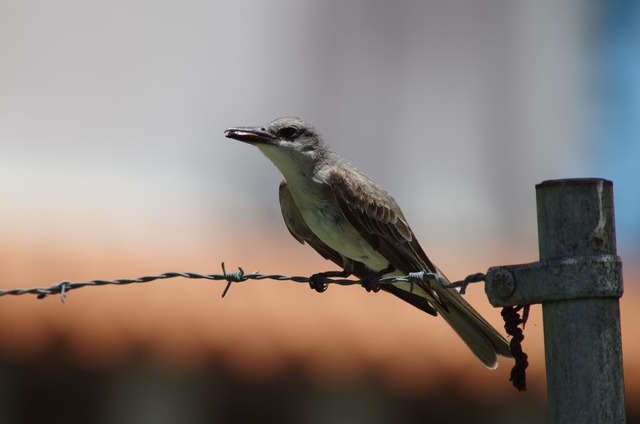
Here I also saw a few families of the very handsome Green Iguana, which is a big and powerful lizard. This family was resting in the shadows next to the golf course.
Needless to say, if you go with your kids to Florida you need to visit Universal Studios. It really is an amazing place. If you have visit this amusement park all others will feel simple (we have visited many big ones in other countries). It is a must if you like this type of parks.
As we left Orlando we drove down to Miami for the cruise ship to the Bahamas. I was surprised to find myself enjoying it so much. I was confident my kids would love it (as they did) but just relaxing with the all inclusive packet was nice for a change. At Grand Bahama I had planned to have a full day of birding and therefor I had contacted a local guide, Erica who took me out. First she showed me a nesting Antillean Nighthawk with chicks which was a good start.
We visited some target spots in town before we drove east towards the pine forests. Here I was hoping to see Bahama Warbler, Olive-capped Warbler. Unfortunatly we only saw the Olive-capped (heard the Bahama singing further into the forest). Very surprising was the sighting of 2 Brown-headed Nuthatches which is a very rare bird here. Erica was very thrilled about it as she had only seen it a couple of times before. We also had good views of a thick-billed vireo before we left.
Close to a very nice beach I was hoping to see the third "New World Warbler" in the Bahama Yellowthroat but it was probably to late in the day and to many people around so we missed it. The beach was lovely though and we had our lunch sandwich here.
We then continued towards town and made our last stop at the botanical garden. Here I saw the beautiful Red-legged Thrush, Cuban Emerald as well as Black-faced Grassquit.
Our trip then continued to Nassau and Great Stirrup Kay. The latter is a private island which is made up to suite tourist. For a day this is very pleasant and I had some decent snorkeling. I saw my first Barracuda as well as some very colorful fishes. At the beach there was a colony of Least Terns and a few Ruddy Turnstones. A couple of Bananaquits were also joining us at the public area.
Over all this was a very pleasant trip which I must recommend if traveling with your family. At the Keys I saw only a few new lifers, Gray Kingbird, Roseate Tern, Shiny Cowbird and White-crowned Pigeon. In the Bahamas a saw a total of 41 species, most of them at Grand Bahama.

